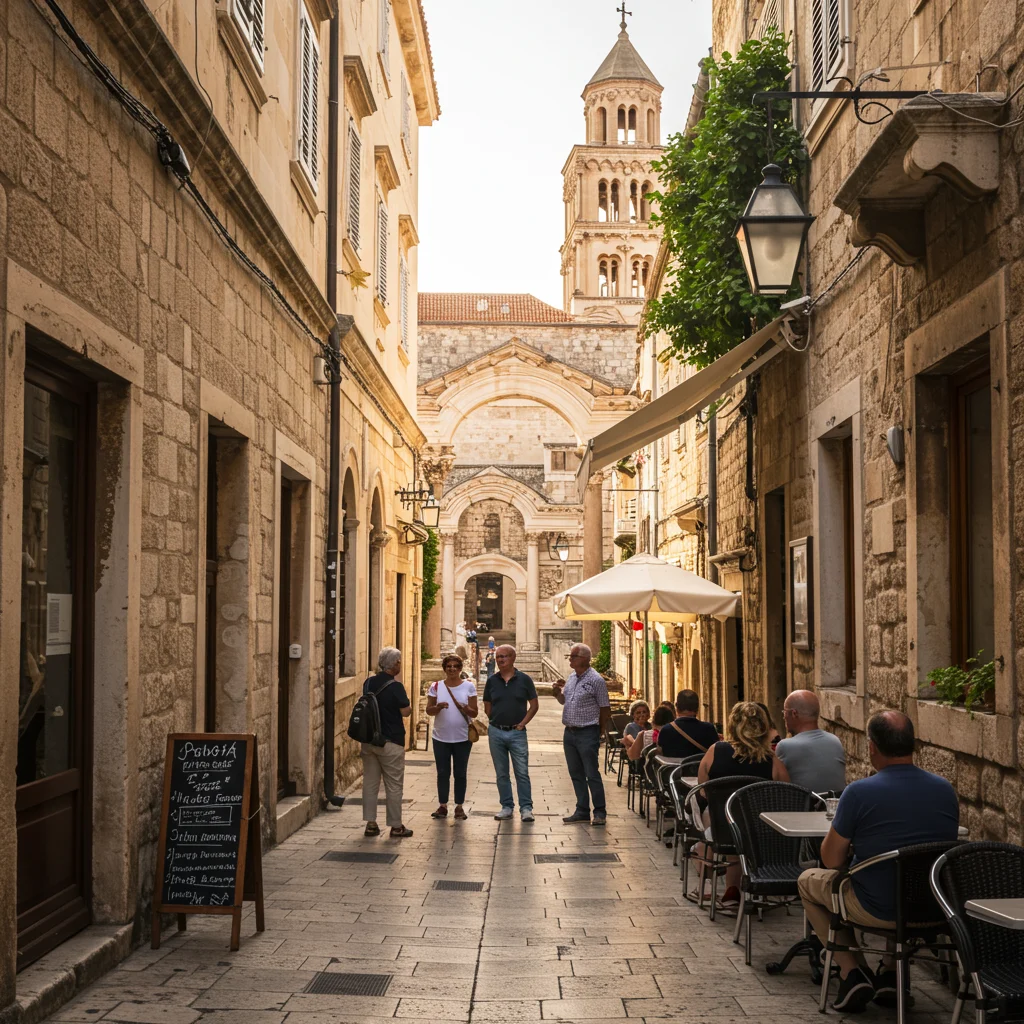Introduction to Split and Diocletian’s Palace
Nestled along Croatia’s sun-kissed Adriatic coast, Split is a city where ancient history and modern vibrancy meet. At its heart stands Diocletian’s Palace, a UNESCO World Heritage Site and one of the world’s most remarkable Roman monuments. Here, labyrinthine stone streets echo with centuries of stories, while the scent of sea air mingles with aromatic Mediterranean cuisine.
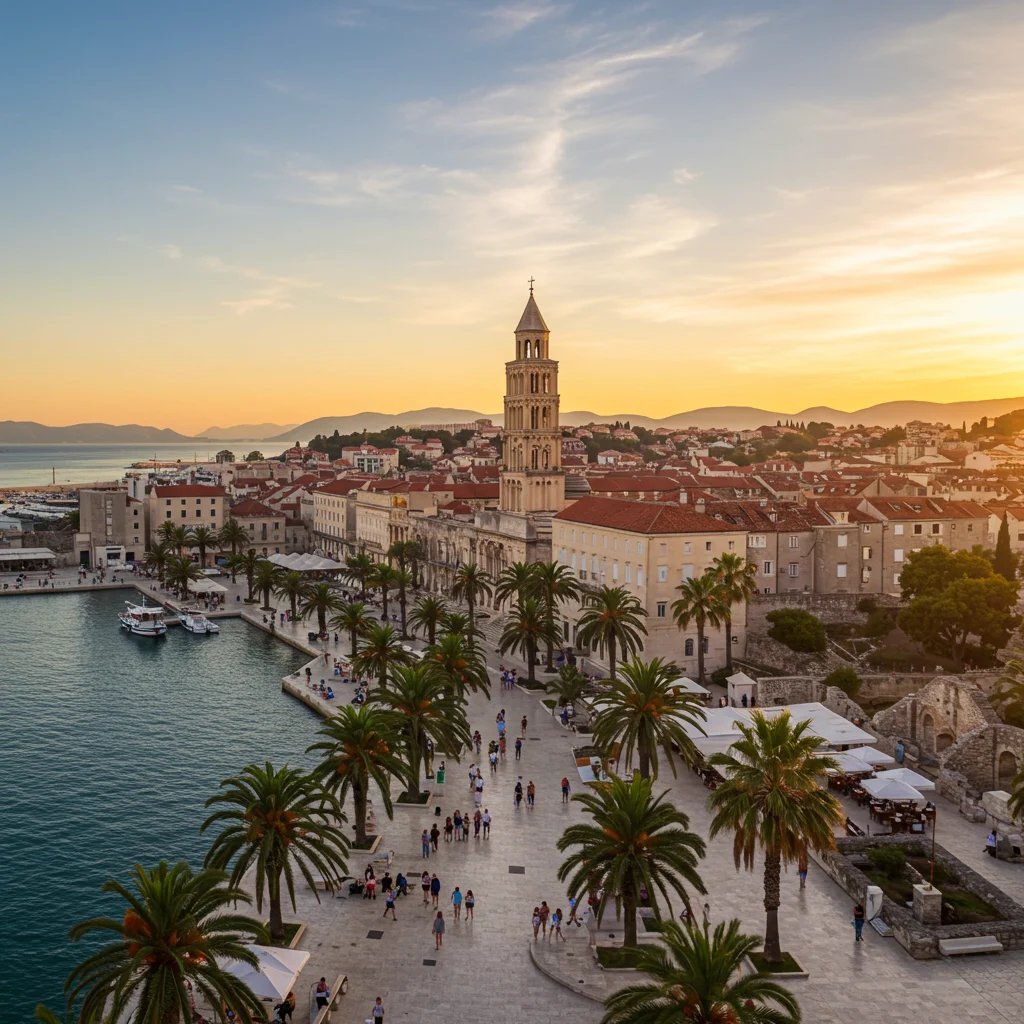
A visit to Split offers not just architectural splendor, but an immersive journey through time, culture, and the daily rhythm of Dalmatian life. Whether seeking a leisurely stroll or an in-depth exploration, the city promises an unforgettable experience.
Why Choose a Private Tour in Split?
Opting for a private tour in Split allows travelers to uncover the city’s treasures at their own pace, guided by local experts who tailor the experience to individual interests. Unlike group tours, private excursions offer flexibility, exclusivity, and the freedom to linger at captivating sights.
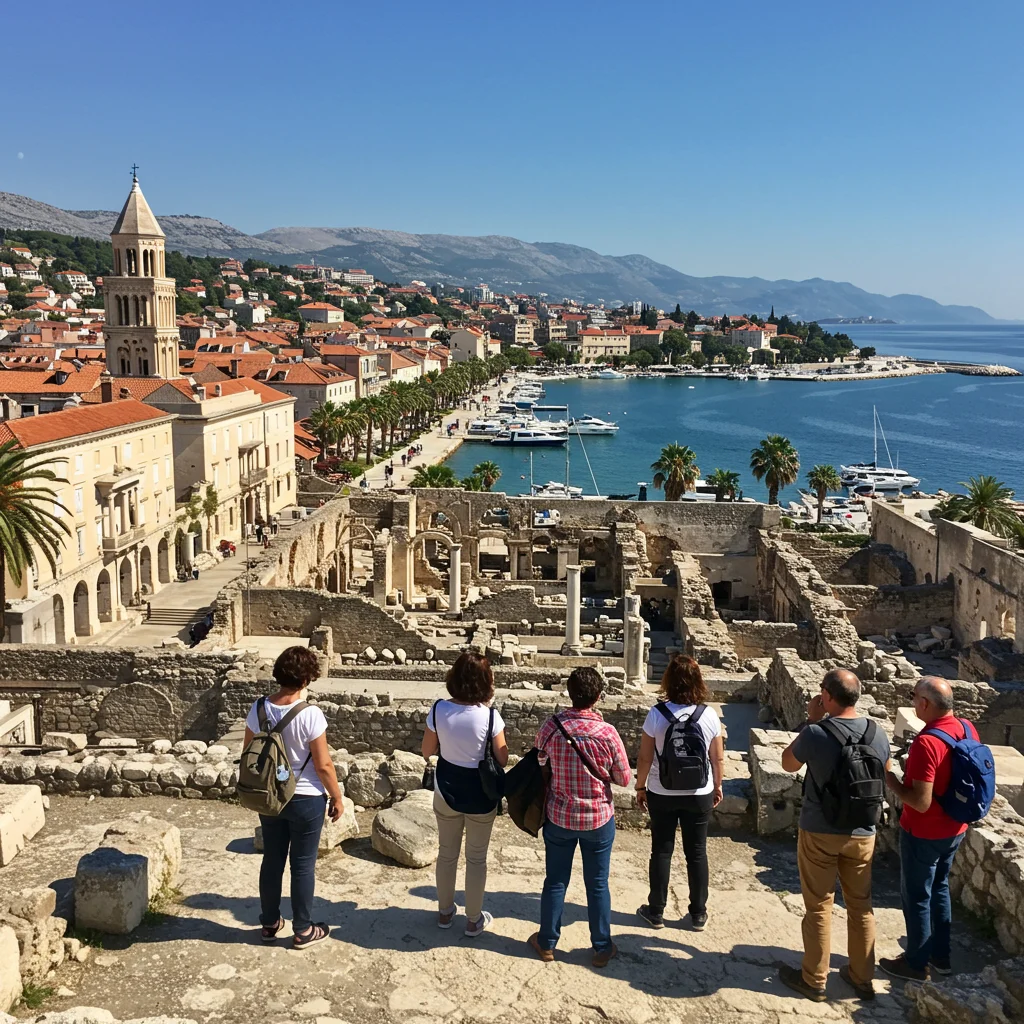
We find that private tours create more intimate connections with both the city and its stories, as guides can answer specific questions and adapt to personal preferences. This approach ensures that every moment in Split is meaningful and memorable.
What Makes Split a Must-Visit Destination?
The allure of Split lies in its seamless blend of antiquity and lively Mediterranean ambiance. Visitors are drawn to its stone-paved alleys, bustling waterfront, and the living history embedded within Diocletian’s Palace. The city’s coastal setting provides breathtaking sea views, while its cultural calendar brims with events, music, and festivals.
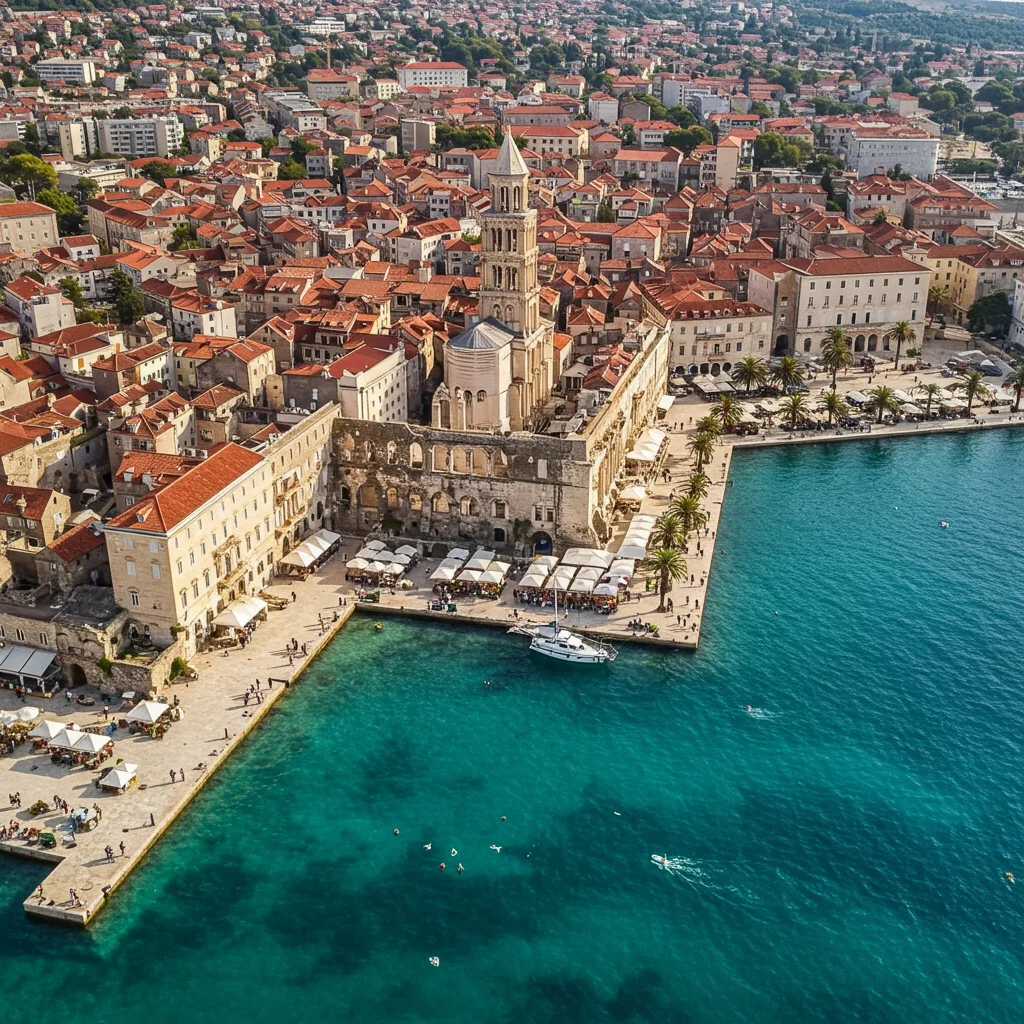
From the aroma of freshly baked pastries in local markets to the vibrant energy of the Riva promenade at sunset, Split offers sensory delights at every turn. For those curious about exploring further afield, the Blue Cave boat tour from Dubrovnik is another Adriatic highlight worth considering.
A Brief History of Split
Founded in the 3rd century AD, Split has grown from a Roman imperial retreat into Croatia’s second-largest city. Its history is marked by layers of Greek, Roman, Venetian, and Austro-Hungarian influence, each leaving an indelible mark on the city’s architecture and culture.
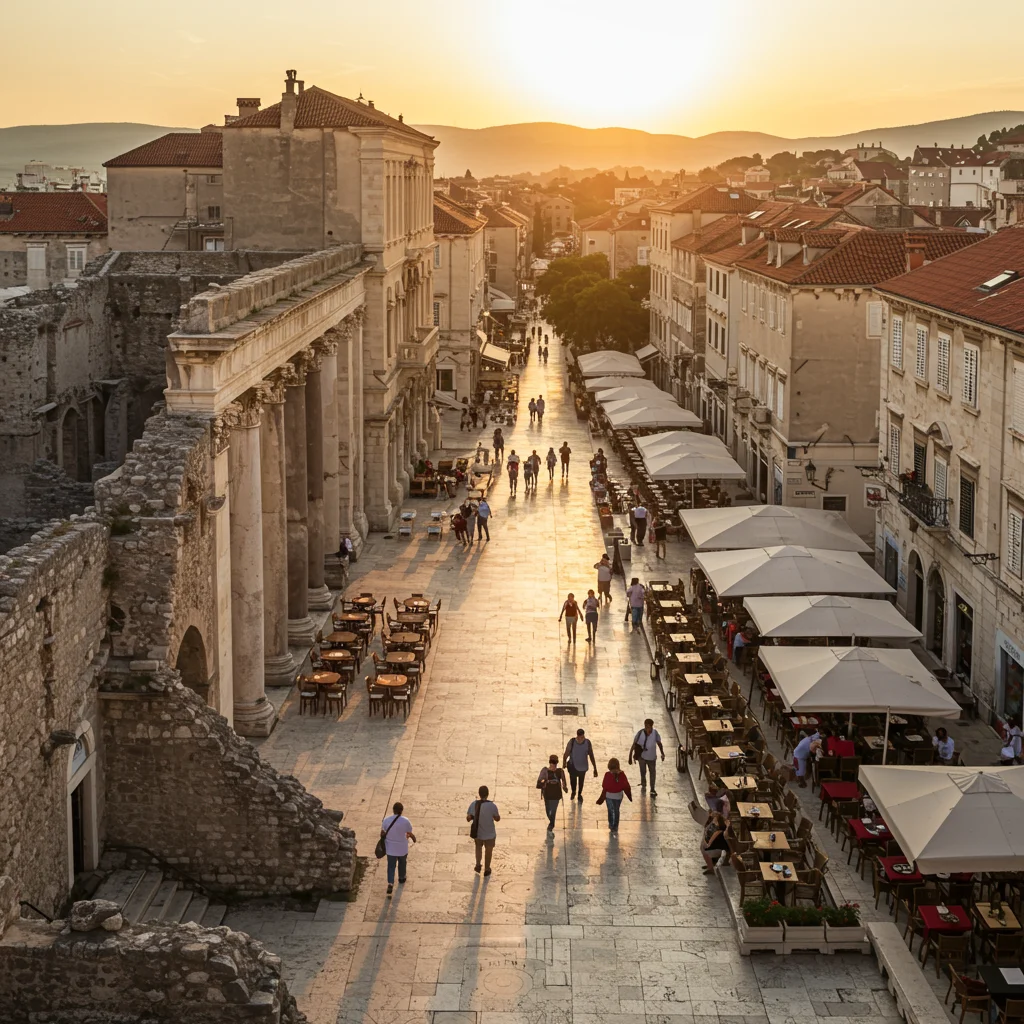
The city’s centerpiece, Diocletian’s Palace, began as the retirement residence of a Roman emperor and gradually transformed into a bustling urban center. Today, its ancient walls house homes, shops, cafes, and museums, creating a unique blend of past and present.
Who Was Diocletian and Why Did He Build the Palace?
Emperor Diocletian ruled the Roman Empire from 284 to 305 AD, renowned for his administrative reforms and efforts to stabilize the empire. After abdicating the throne, he chose the sparkling shores of Dalmatia for his retirement, commissioning a grand palace to serve as his residence and fortress.
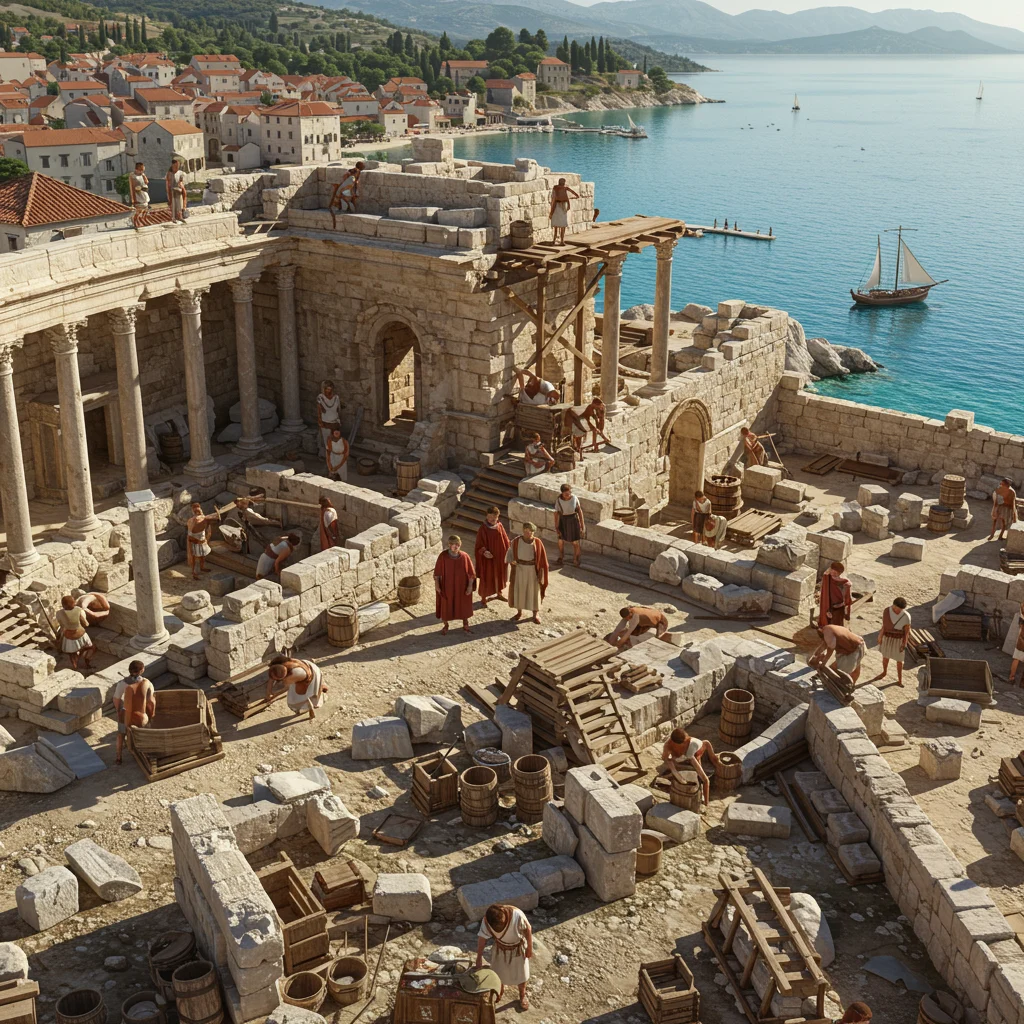
The palace was designed as both a luxurious villa and a secure stronghold, reflecting Diocletian’s status and the turbulent times. Its construction utilized local limestone and marble, as well as skilled artisans from across the empire.
Overview of Diocletian’s Palace
Spanning over 30,000 square meters, Diocletian’s Palace is less a single building and more a walled city. Its layout includes imperial apartments, temples, courtyards, and fortified gates, all interwoven with narrow passageways and lively squares.
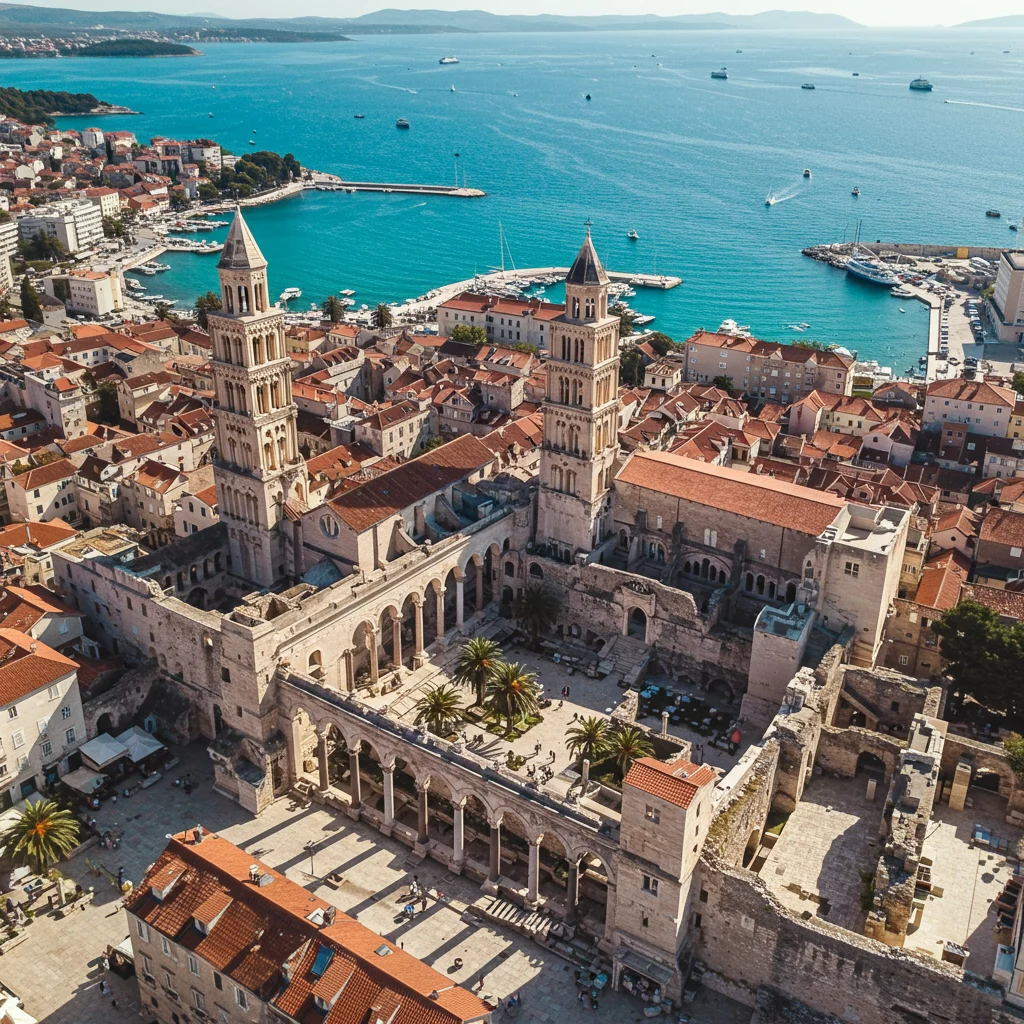
Over centuries, the palace evolved from an imperial residence to the living heart of Split. Today, it stands as a testament to Roman engineering and the adaptability of urban spaces.
What to Expect on a Private Tour of Split & Diocletian’s Palace?
A private tour of Split and Diocletian’s Palace typically begins at one of the palace gates, where visitors are greeted by the intricate stonework and grandeur of Roman architecture. Guides share stories of emperors, merchants, and everyday citizens who once walked these streets.
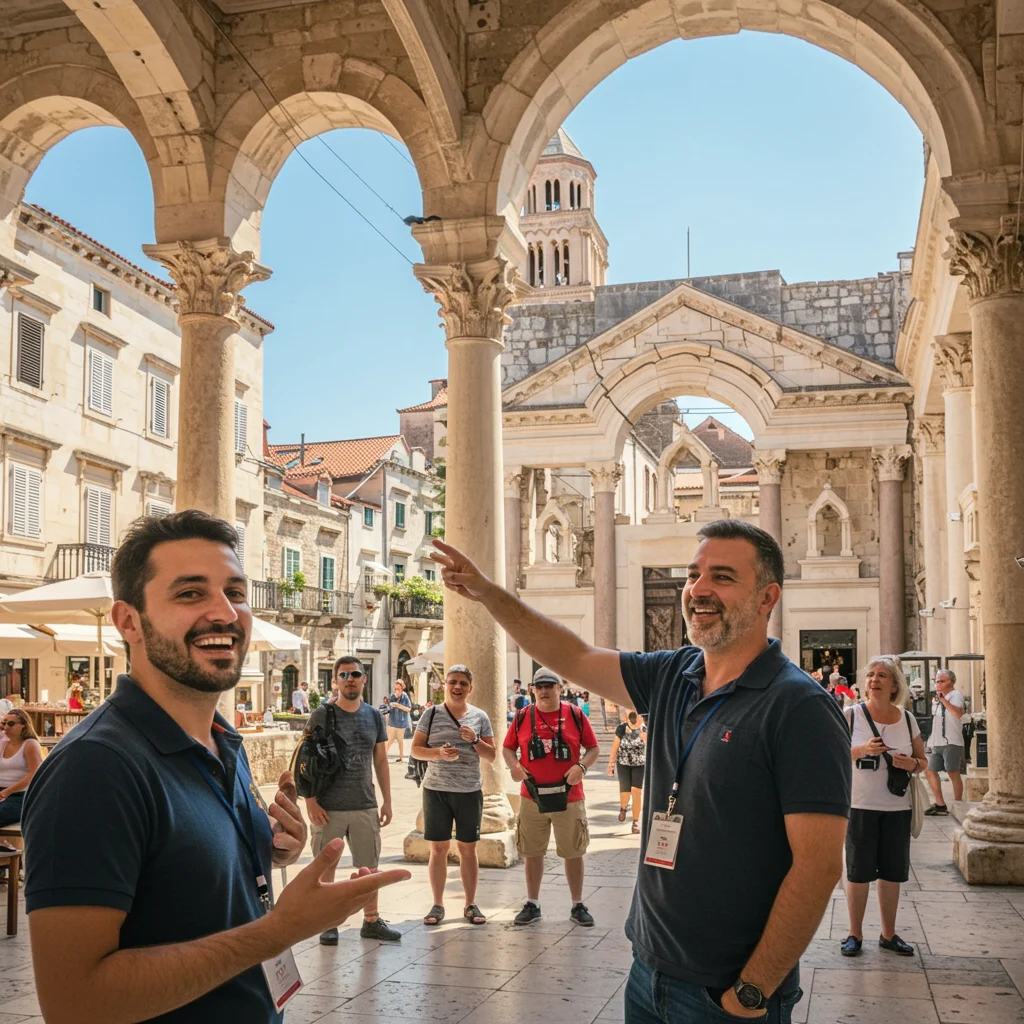
Expect to uncover hidden courtyards, ancient temples, and underground chambers. Private tours often include visits to artisan shops, local markets, and scenic viewpoints, allowing for a comprehensive and personalized experience.
Benefits of Booking a Private Tour vs. Group Tours
Private tours in Split offer several distinct advantages over group excursions:

- Personalized attention from knowledgeable guides
- Flexible pacing and itinerary
- Opportunities to focus on personal interests, such as history, architecture, or cuisine
- Greater comfort and privacy
- Ability to ask in-depth questions and have meaningful conversations
For travelers who appreciate tailored experiences, private tours deliver a richer connection with Split’s heritage and daily life.
How to Choose the Best Private Tour Guide in Split
Selecting the right private tour guide can make all the difference. We recommend seeking guides who are licensed, fluent in your preferred language, and passionate about Split’s history. Reading recent reviews and asking for recommendations from trusted sources can be invaluable.
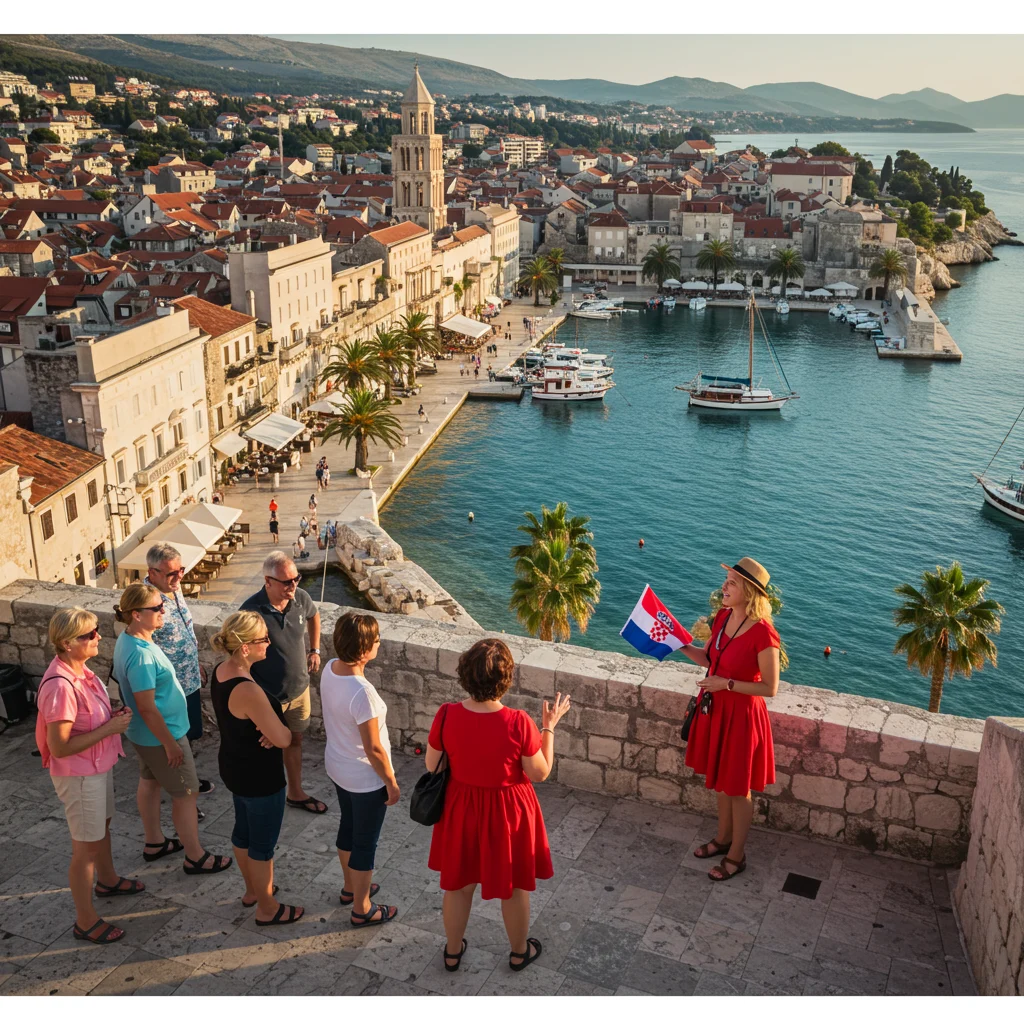
A knowledgeable guide will not only share historical facts but also offer insights into local culture, traditions, and daily routines. Their enthusiasm and expertise transform a simple tour into a memorable journey.
Top Features of a Customized Private Tour
The best private tours of Split include elements tailored to your interests. These might involve:
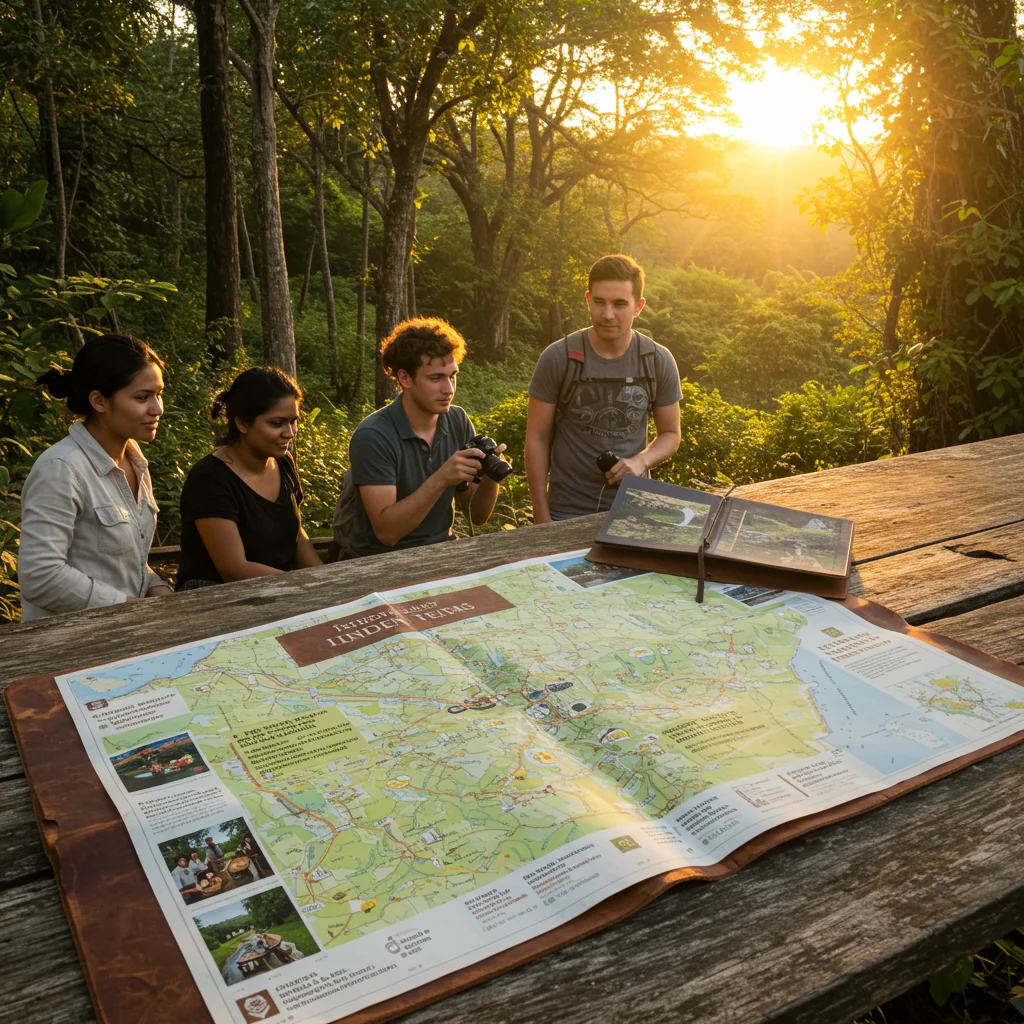
- Exclusive access to lesser-known palace chambers or museum exhibits
- Opportunities to meet local artisans and sample regional delicacies
- Flexible stops for photography or relaxation
- Personalized recommendations for dining, shopping, and entertainment
Customization ensures that every moment of your visit is engaging and relevant to your preferences.
Best Time of Year to Visit Split and Diocletian’s Palace
Split’s Mediterranean climate makes it a pleasant destination year-round, but the ideal time to visit is during the spring (April to June) or early autumn (September to October). During these months, the weather is warm, the city is lively, and the crowds are manageable.
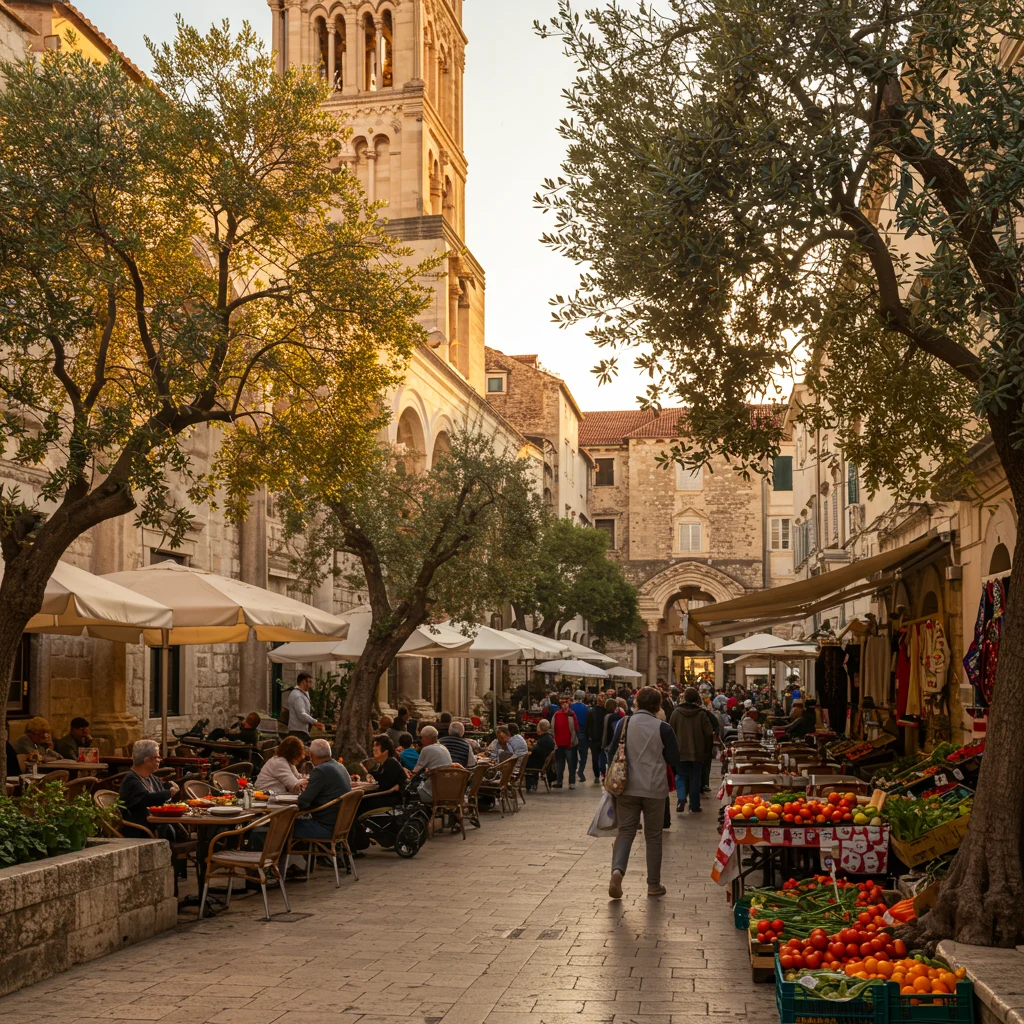
Summer brings vibrant festivals and long, sun-drenched days, while winter offers a quieter, more intimate atmosphere for exploring historic sites.
How to Prepare for Your Private Tour
Preparing for a private tour of Split involves a few practical steps. Comfortable walking shoes are essential, as the palace and city center are best explored on foot. We also suggest bringing a hat, sunscreen, and a reusable water bottle, particularly in the warmer months.
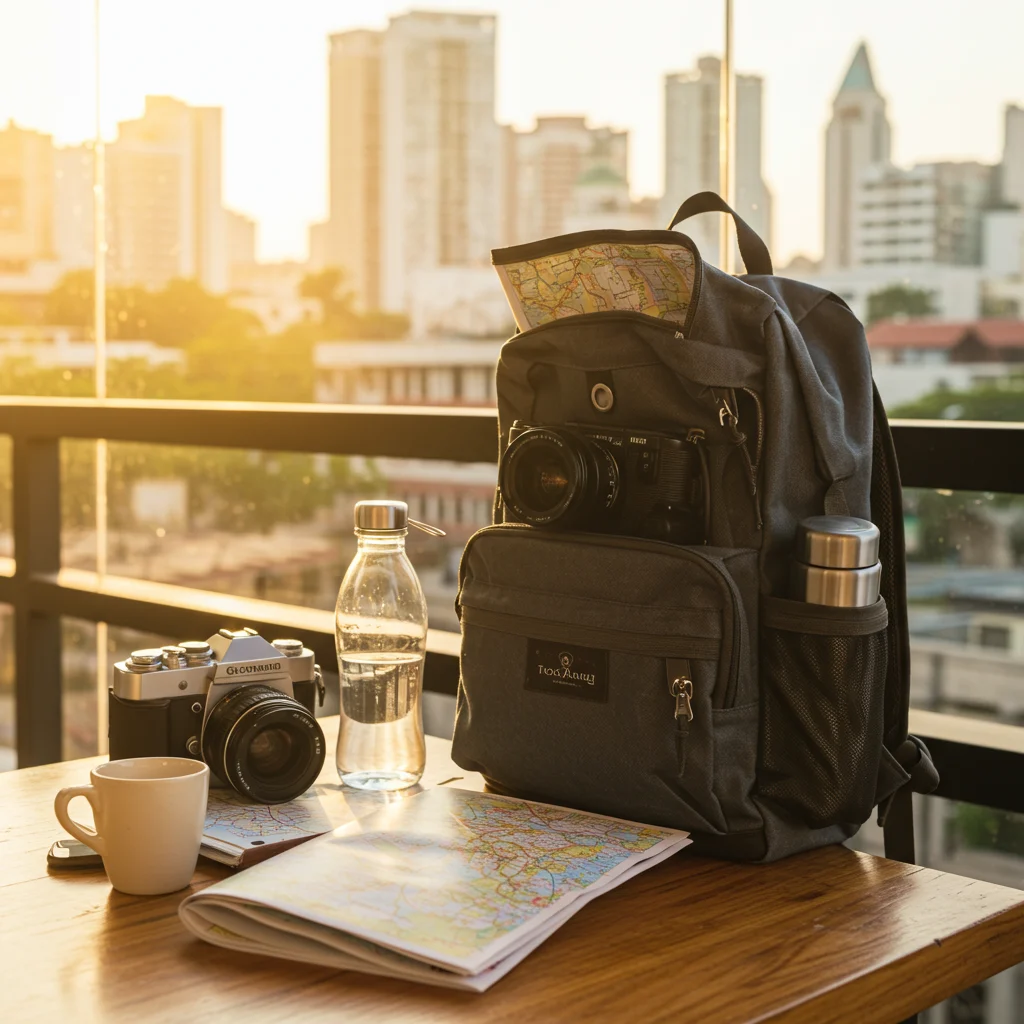
Booking your tour in advance and communicating any special interests or needs to your guide will help them tailor the experience for you.
Essential Tips for First-Time Visitors to Split
For those visiting Split for the first time, we recommend:
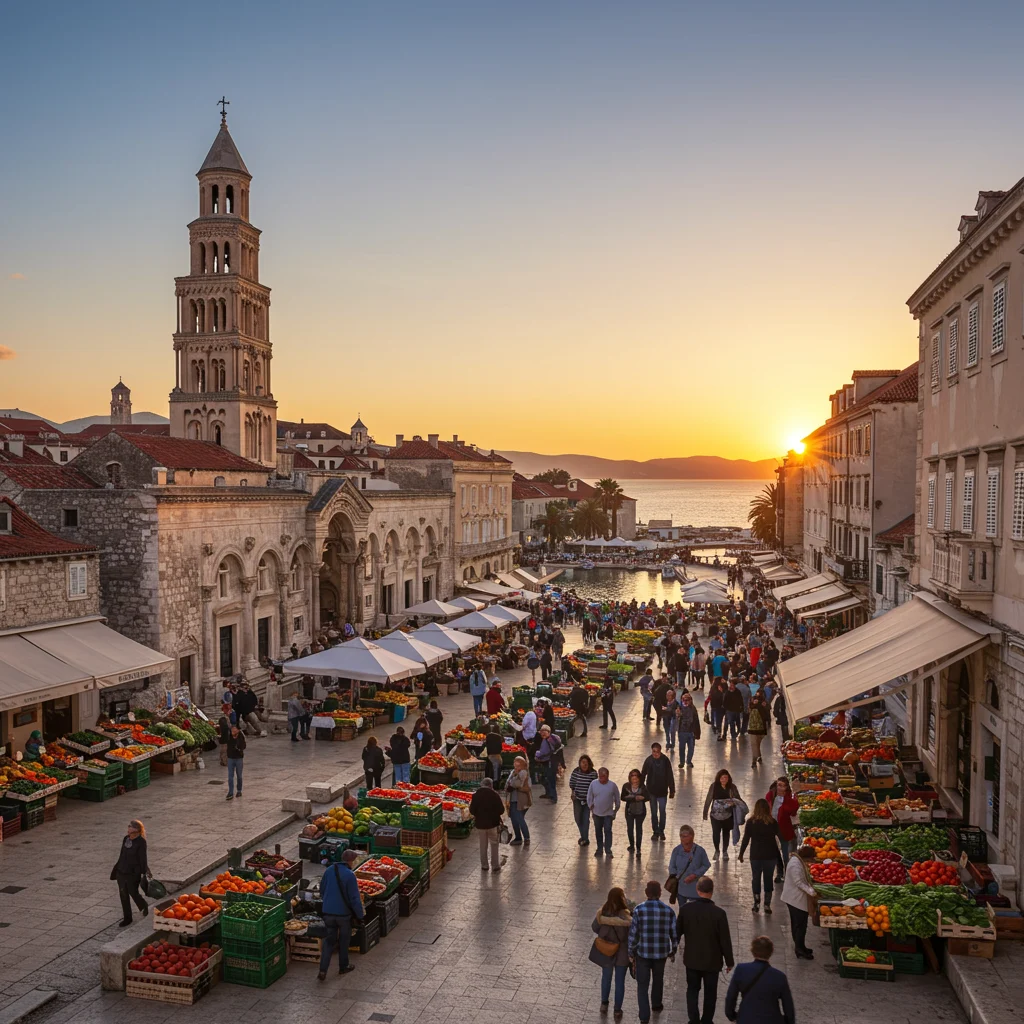
- Arriving early to enjoy the palace before crowds gather
- Trying local pastries and coffee at a café along the Riva
- Exploring side streets for unique shops and galleries
- Setting aside time to relax by the sea
As we covered in our post about the Zagreb BIG Tour, Croatia’s cities each offer their own distinct charm and pace.
Getting to Split: Transportation Options
Split is accessible by air, sea, and land. The city’s international airport offers connections to major European cities, while ferries link Split with nearby islands and coastal destinations. Trains and buses provide convenient options for travelers arriving from within Croatia or neighboring countries.
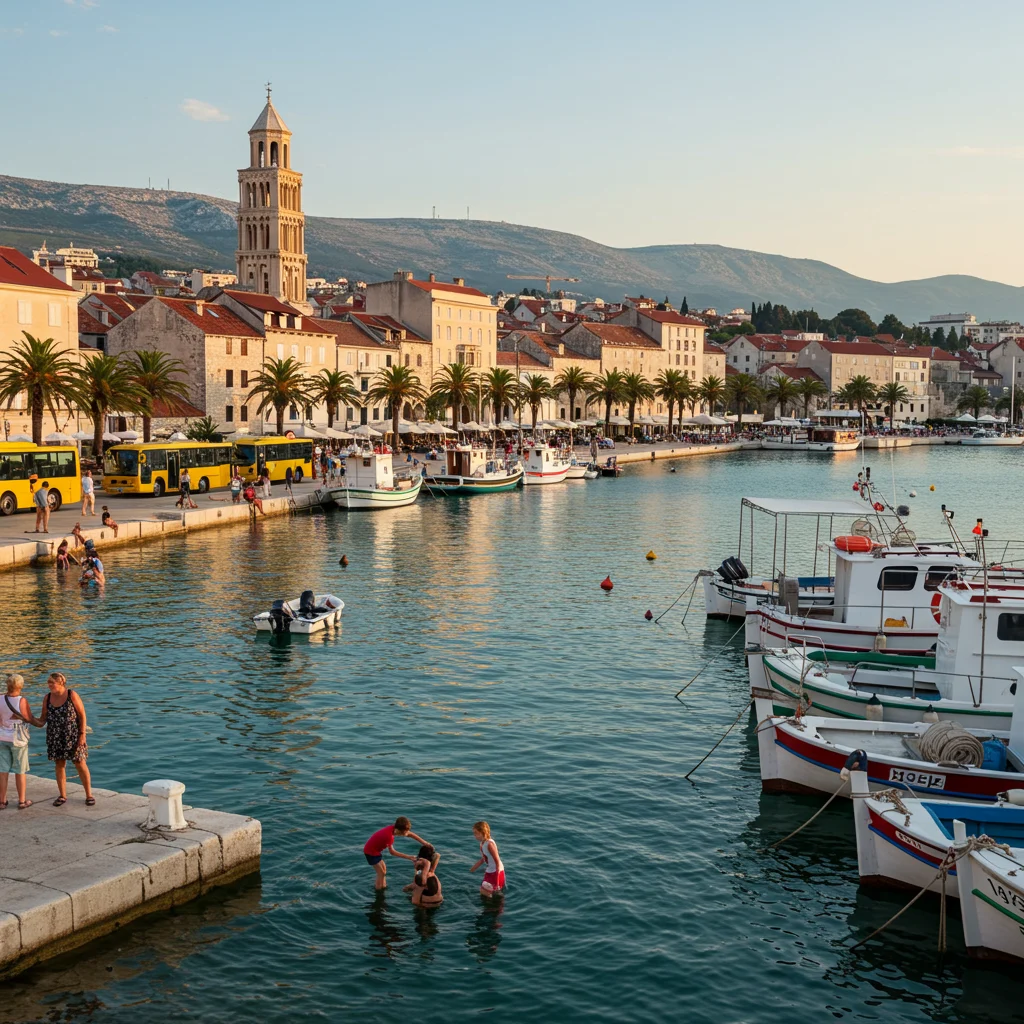
Once in Split, the city center is compact and walkable, making it easy to reach most attractions without a car.
Where to Stay in Split: Accommodation Guide
Split offers a wide range of accommodations, from historic boutique hotels within Diocletian’s Palace to modern apartments along the waterfront. Staying within or near the old town allows for easy exploration and an immersive experience of the city’s rhythms.
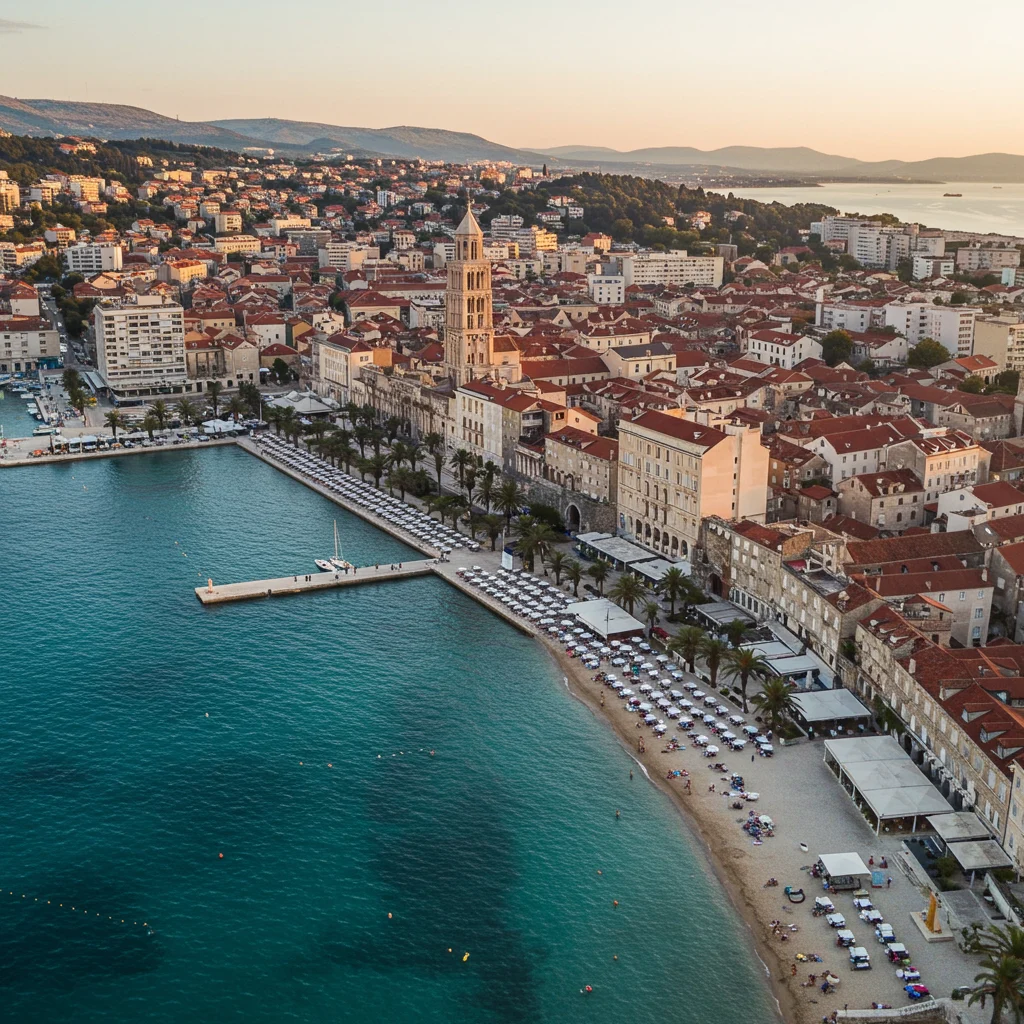
For travelers seeking tranquility, nearby neighborhoods such as Meje or Bacvice provide peaceful retreats just minutes from the city’s vibrant core.
Exploring Diocletian’s Palace: A Walking Tour
Walking through Diocletian’s Palace is a journey through centuries of history and architectural evolution. The palace’s layout invites discovery, with new details revealed around every corner—from carved stone reliefs to bustling squares alive with music and laughter.
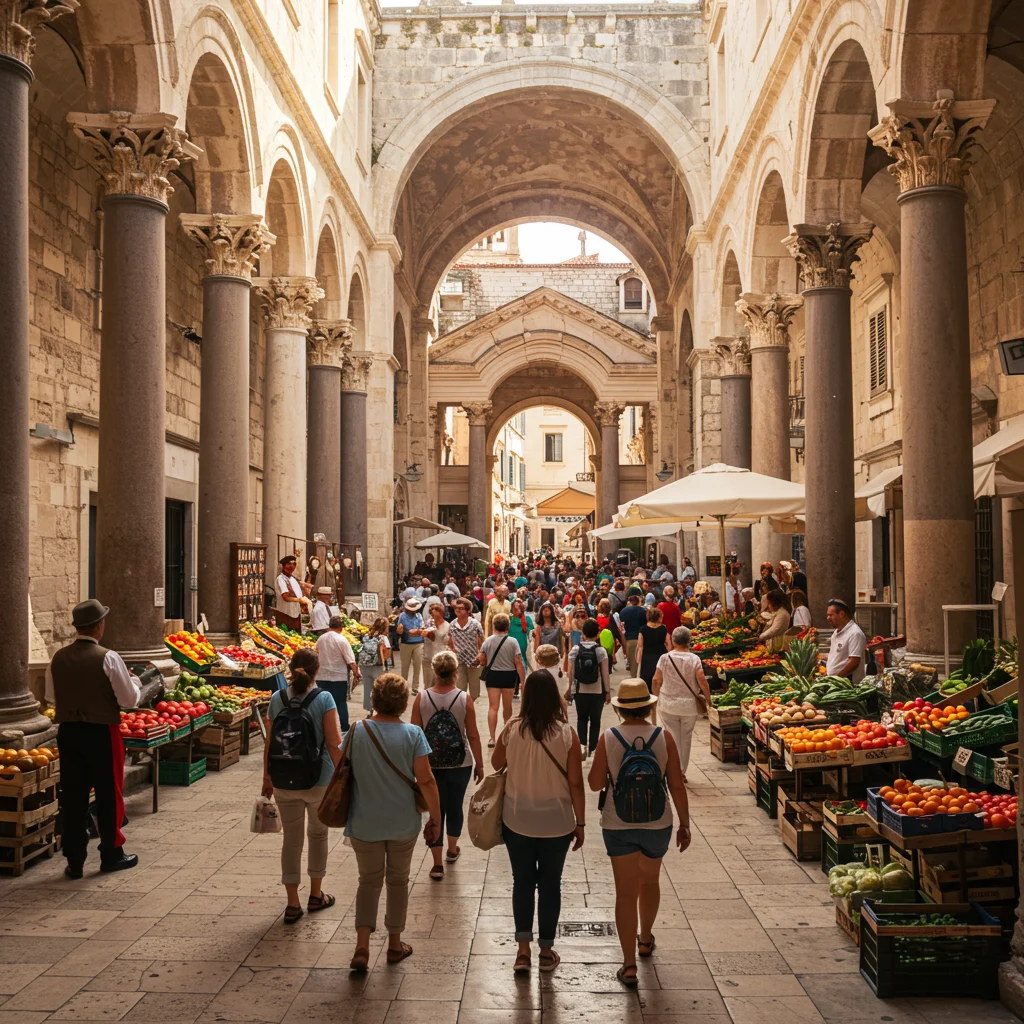
Let’s explore some of the palace’s most captivating sights.
The Peristyle: Heart of Diocletian’s Palace
The Peristyle serves as the palace’s central courtyard, framed by towering columns and marble arches. It was once the ceremonial heart of the complex, where Diocletian addressed his subjects. Today, the Peristyle buzzes with life, hosting live music, performances, and impromptu gatherings.
Cathedral of Saint Domnius: History & Highlights
Originally built as Diocletian’s mausoleum, the Cathedral of Saint Domnius is now one of Europe’s oldest active cathedrals. Its bell tower offers panoramic views of Split and the Adriatic, while the interior dazzles with intricate mosaics and ancient relics.
Visitors are often struck by the cathedral’s serene atmosphere, where the cool air carries whispers of centuries-old prayers.
The Substructures: Underground Secrets
Beneath the palace lies a labyrinth of substructures—massive vaulted chambers that once supported the imperial apartments above. These underground spaces now house exhibitions, artisan stalls, and archaeological displays.
The echo of footsteps and the scent of cool stone evoke a sense of mystery and discovery.
Golden Gate and Other Palace Entrances
The palace is accessed through four gates, each named for a different metal: Golden, Silver, Iron, and Bronze. The Golden Gate is the most grand, flanked by imposing statues and ancient walls. Passing through these entrances, visitors are transported from the bustle of modern Split into the timeless embrace of Roman architecture.
Vestibule and Imperial Apartments
The Vestibule is a circular hall with a soaring dome that once marked the entrance to the imperial residence. Its acoustics are so impressive that local a cappella groups often perform here, their voices resonating against the ancient stones.
Beyond the Vestibule, the imperial apartments reveal remnants of mosaic floors and frescoes, offering glimpses into the opulence of Diocletian’s court.
Jupiter’s Temple: A Pagan Legacy
Dedicated to the Roman god Jupiter, this temple stands as a testament to the city’s pagan origins. Its barrel-vaulted ceiling and carved stone sphinxes create an atmosphere of reverence and awe, bridging the worlds of antiquity and modern faith.
The Cellars: Game of Thrones Filming Locations
Fans of the hit series will recognize the palace’s cellars as the setting for Daenerys Targaryen’s throne room in “Game of Thrones.” Guided tours often highlight these atmospheric chambers, sharing stories of both ancient Rome and contemporary film history.
What Architectural Styles Can You See in the Palace?
Diocletian’s Palace showcases a fascinating mix of Roman, Byzantine, and Venetian influences. Visitors can admire classical columns, medieval additions, and ornate Renaissance facades—all coexisting within the palace’s walls.
This architectural diversity reflects centuries of adaptation and transformation, making the palace a living chronicle of Split’s past.
Hidden Corners and Lesser-Known Sights Inside the Palace
Beyond the main attractions, the palace harbors secluded courtyards, artisan workshops, and quiet chapels. We encourage visitors to wander off the beaten path, where every turn may reveal a centuries-old inscription or an inviting café tucked into a stone alcove.
Walking the Riva Promenade
The Riva Promenade stretches along the sparkling waterfront, lined with palm trees, open-air cafés, and market stalls. Locals and travelers alike gather here to sip espresso, watch the boats glide across the harbor, and soak in the vibrant atmosphere as the sun sets behind nearby islands.
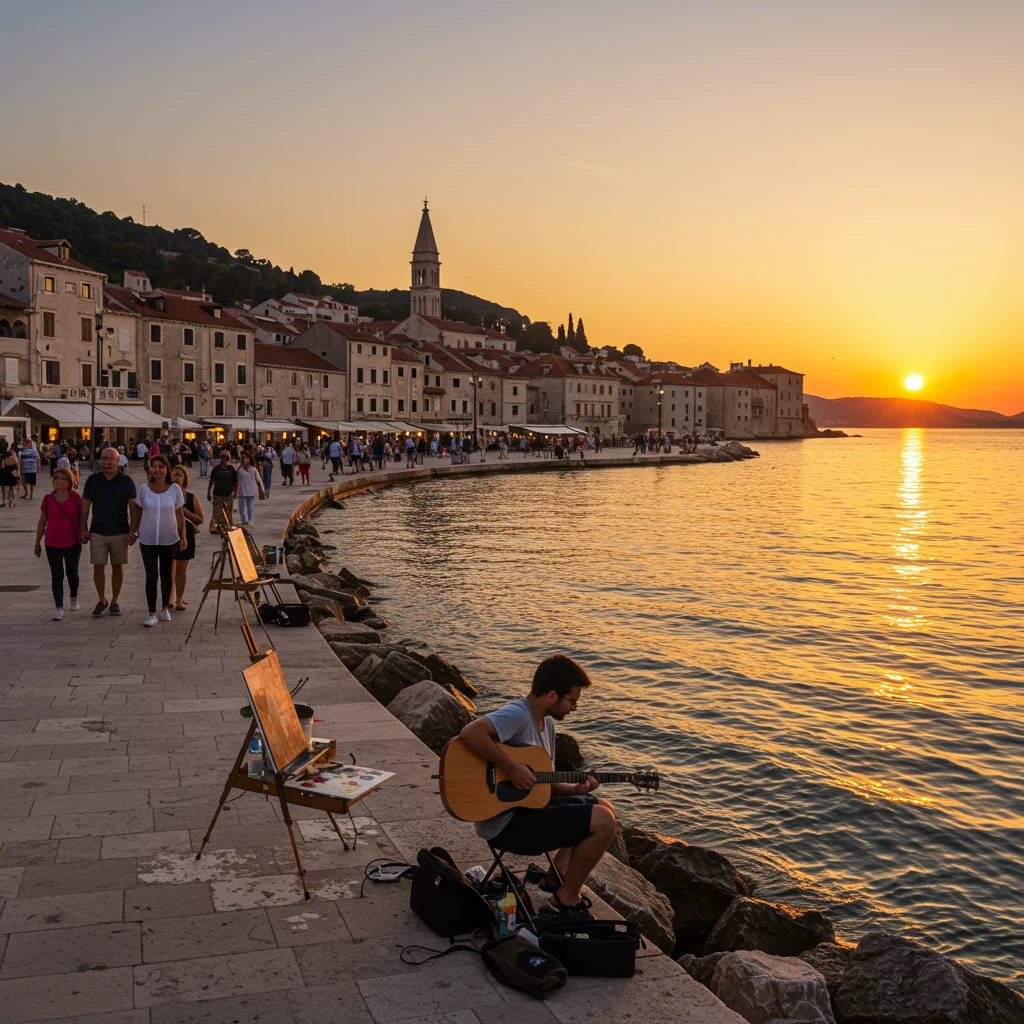
Live music, street performers, and the gentle sea breeze create a sense of celebration that lingers well into the evening.
Local Markets Near Diocletian’s Palace
Just outside the palace walls, the Pazar Market bursts with color and energy. Vendors display fresh fruits, vegetables, cheeses, and handmade crafts, filling the air with the scents of basil and ripe figs. It’s the perfect place to sample local flavors or pick up a unique souvenir.
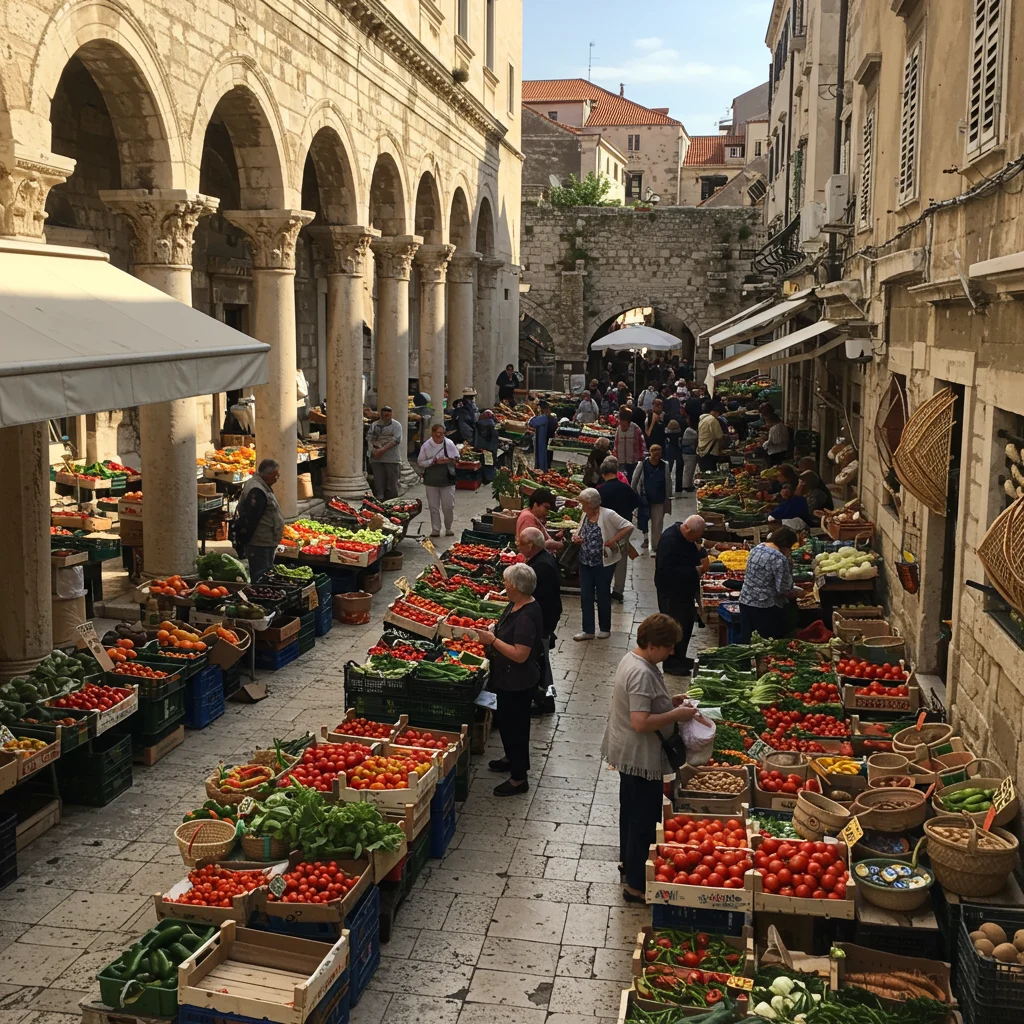
Shopping for Souvenirs in Split
Split’s old town is dotted with boutiques and artisan workshops offering everything from hand-painted ceramics to olive oil and traditional lace. Shopping here supports local craftspeople and provides lasting reminders of your visit.
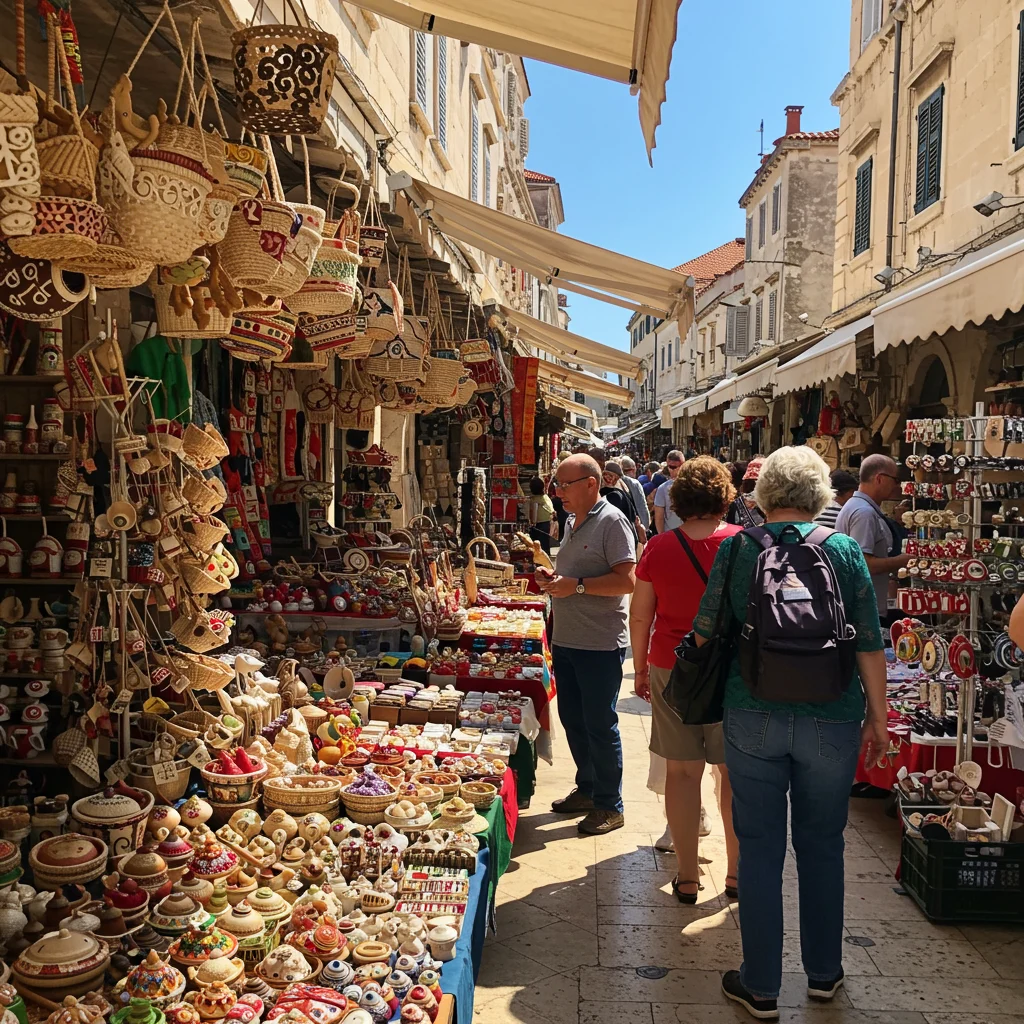
Many shops are located within the palace itself, adding a sense of discovery to your retail therapy.
Experiencing Split’s Culinary Scene
Dining in Split is a feast for the senses, with menus celebrating the bounty of the Adriatic and Dalmatian hinterland. From fresh seafood to hearty stews and pastries, the city’s culinary scene invites exploration and indulgence.
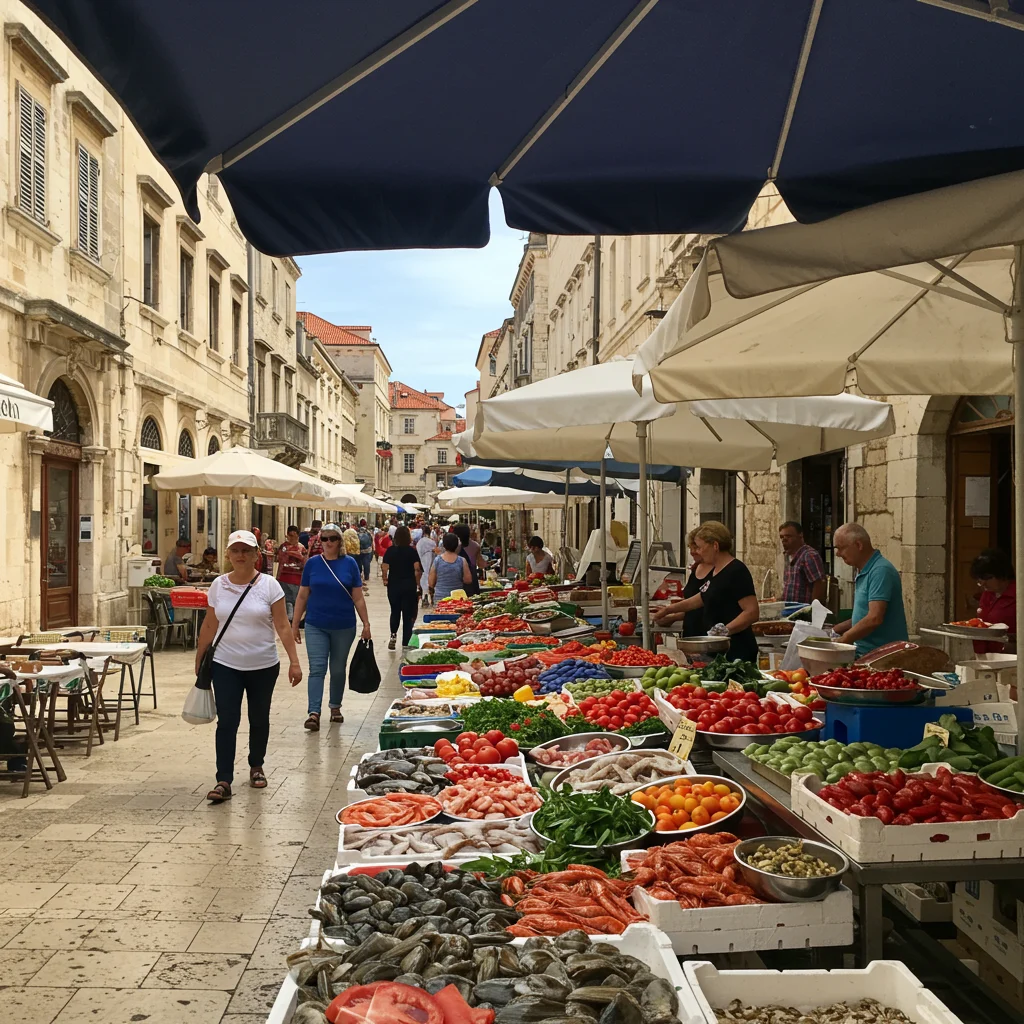
Best Restaurants and Cafés Near the Palace
The area surrounding Diocletian’s Palace is home to acclaimed restaurants and cozy cafés. Whether seeking fine dining or a casual meal, visitors can enjoy dishes crafted from locally sourced ingredients in settings that blend historical charm with contemporary flair.
What Traditional Dalmatian Dishes Should You Try?
We recommend sampling:
- Pasticada – slow-cooked beef in a rich wine sauce
- Black risotto – rice with cuttlefish ink and seafood
- Peka – meat and vegetables baked under a bell-shaped lid
- Fritule – bite-sized sweet doughnuts dusted with sugar
These dishes reflect the region’s culinary heritage and the influence of both land and sea.
Wine Tasting Experiences in Split
Dalmatia is renowned for its robust red wines and crisp whites. Many wine bars in Split offer tastings of local varietals paired with cheeses and cured meats. Sipping a glass of Plavac Mali as the sun dips below the harbor is an experience not to be missed.
As experts often say:
“Travel is not just about seeing new places, but about tasting, smelling, and feeling the spirit of a destination with all your senses.”
Cultural Events and Festivals in Split
Split’s calendar is filled with lively cultural events, from open-air concerts and art exhibitions to the world-famous Split Summer Festival. These celebrations bring the city’s ancient squares and streets to life, offering opportunities to engage with local traditions and contemporary creativity.
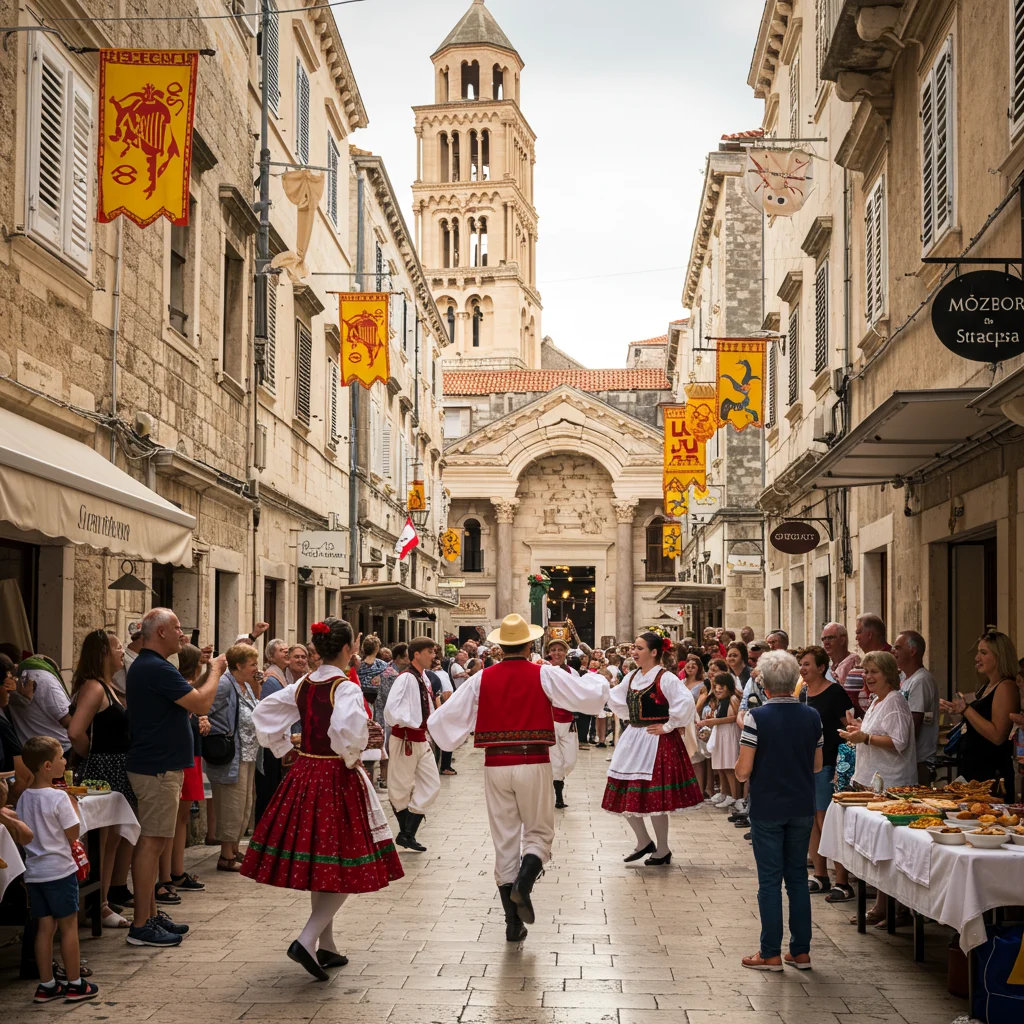
Nightlife in Split: What to Do After Dark?
As evening falls, Split transforms into a hub of activity. Bars and clubs within Diocletian’s Palace offer music, dancing, and craft cocktails, while the waterfront hums with laughter and conversation. For a quieter night, enjoy a glass of wine under the stars or attend a live music performance in one of the city’s historic courtyards.
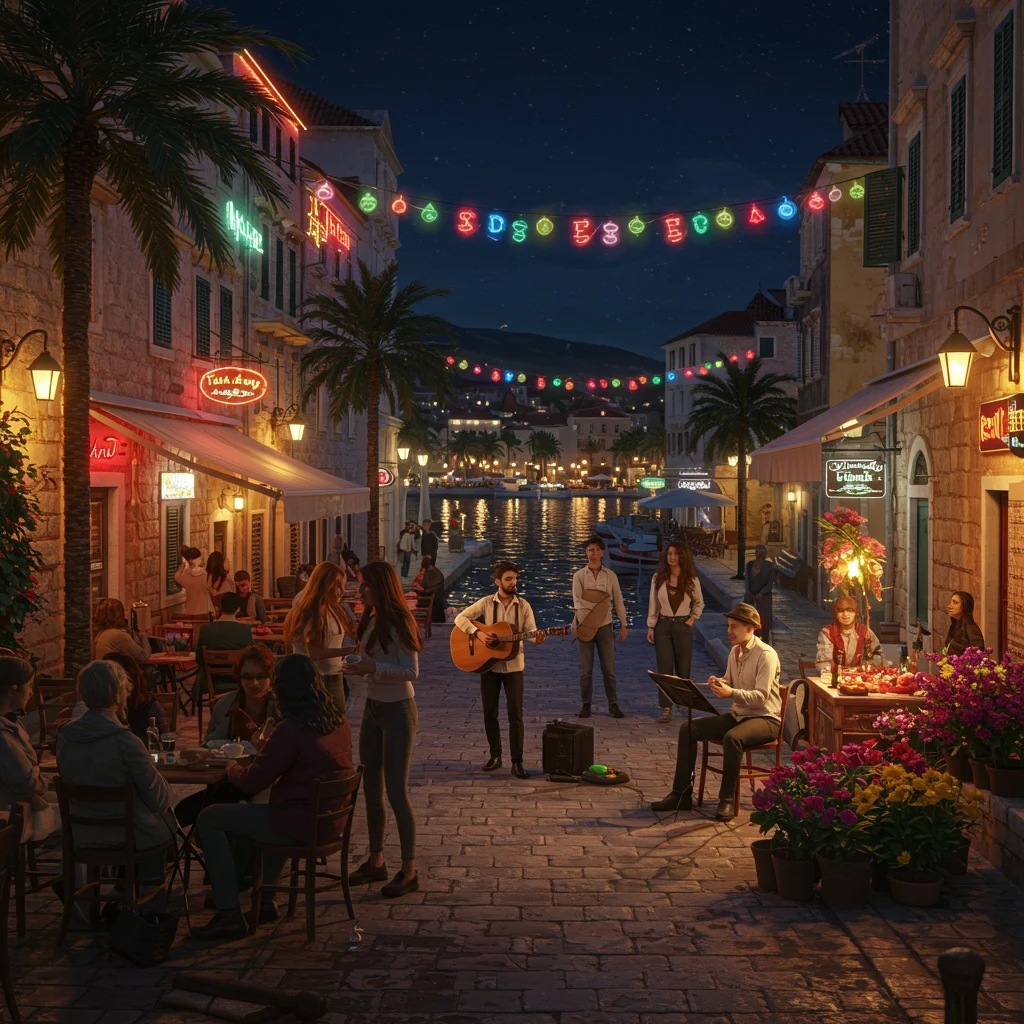
Family-Friendly Activities in Split
Split is a welcoming destination for families, with activities ranging from interactive museum exhibits to safe swimming beaches and boat trips to nearby islands. Children delight in exploring the palace’s hidden corridors and climbing its ancient towers.
Accessible Tours: Options for Visitors with Mobility Needs
Many tour operators in Split offer accessible tours designed for visitors with mobility challenges. These tours focus on routes with smooth surfaces and minimal stairs, ensuring that everyone can enjoy the city’s highlights in comfort and safety.
Guides are happy to adapt itineraries to accommodate specific needs, making Split an inclusive destination for all.
Photography Tips: Capturing the Best of Split and the Palace
To capture Split’s beauty, we suggest:

- Shooting early in the morning or late afternoon for the best light
- Framing photos with the palace’s arches or columns
- Including local life—market vendors, musicians, or children playing
- Climbing the bell tower for panoramic shots of the city and sea
Remember to respect local customs and ask permission before photographing people.
Top Day Trips from Split
Split’s location makes it an ideal base for exploring the wider Dalmatian coast and hinterland. Day trips range from island-hopping adventures to visits to ancient fortresses and natural wonders.
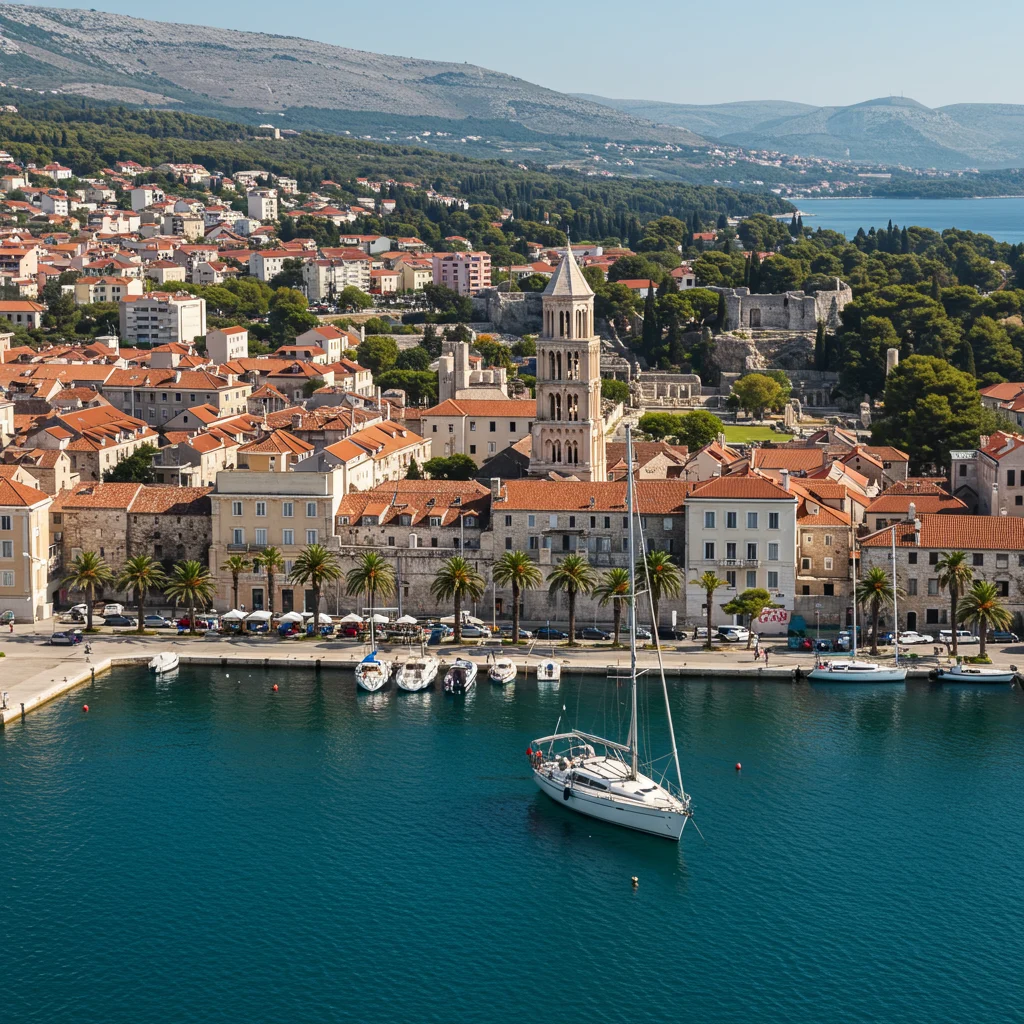
Islands Near Split: Which Ones Are Worth Visiting?
Popular island destinations include Brač, with its famous Zlatni Rat beach; Hvar, known for lavender fields and vibrant nightlife; and Šolta, a peaceful escape with olive groves and hidden coves.
Ferries depart regularly from Split’s harbor, making it easy to plan a day of sun, sea, and discovery.
Klis Fortress: A Panoramic View and Historic Site
Perched high above Split, Klis Fortress offers sweeping views of the city and coastline. This medieval stronghold has guarded the region for centuries and now serves as both a historical landmark and a “Game of Thrones” filming location.
The fortress’s stone walls and towers invite visitors to imagine life as a defender of the city.
Salona: Exploring Ancient Roman Ruins
Just a short drive from Split, Salona was once the capital of the Roman province of Dalmatia. Its ruins include an amphitheater, basilicas, and city walls, providing a fascinating glimpse into the region’s ancient past.
Walking among Salona’s weathered stones, one can almost hear the echoes of gladiators and citizens who once filled its bustling streets.
How to Combine Split with Other Dalmatian Highlights?
Many visitors choose to combine their stay in Split with trips to neighboring cities such as Trogir, Šibenik, or Dubrovnik. These destinations each offer distinctive architecture, history, and coastal scenery. For those seeking a truly immersive experience, private tours with flexible itineraries can be arranged to encompass multiple highlights along the Dalmatian coast.

If you’re curious about extending your journey to other remarkable destinations, see how a private tour can provide a seamless experience, as described in our guide to private tours in India’s Golden Triangle.
Frequently Asked Questions About Private Tours in Split
Below, we answer some of the most common questions about planning a private tour in Split and Diocletian’s Palace.
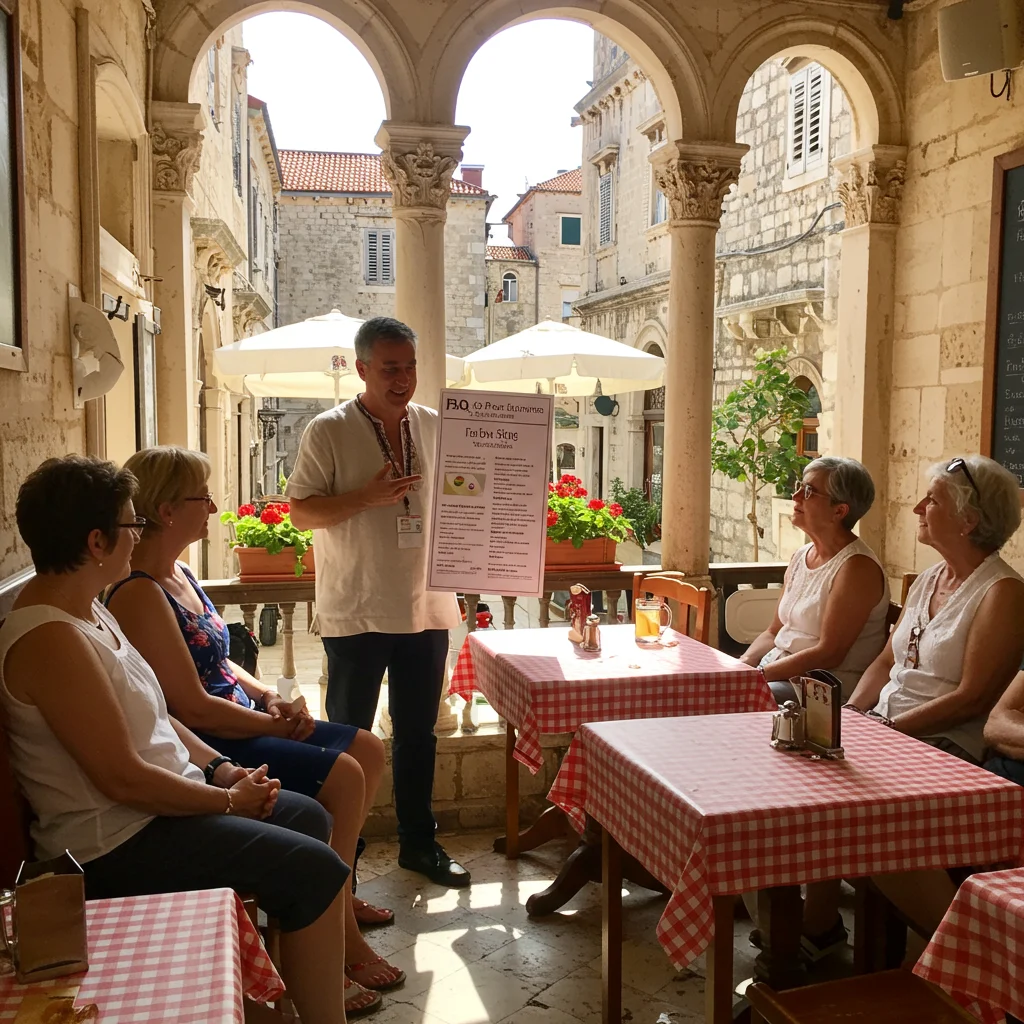
How Long Should a Private Tour of Split Last?
Most private tours of Split and Diocletian’s Palace last between two and four hours, depending on the depth of exploration and additional stops. Full-day tours may include nearby attractions or culinary experiences.
Can You Personalize Your Private Tour Itinerary?
Yes, reputable tour providers are happy to customize itineraries based on your interests—whether you prefer history, architecture, food, or a mix of everything. Communicating your preferences in advance will help your guide create a truly personalized experience.
What Languages Are Available for Guided Tours?
Guided tours in Split are commonly offered in English, German, Italian, French, Spanish, and other major languages. Be sure to specify your language preference when booking.
How Much Does a Private Tour in Split Cost?
Prices for private tours vary based on duration, inclusions, and group size. Generally, expect to pay more than for group tours, but the added value in exclusivity and customization is significant.
What Should You Wear for a Tour of Diocletian’s Palace?
Comfortable, non-slip shoes are essential, as the palace’s stone streets can be uneven. Lightweight clothing, a hat, and sunscreen are recommended during warmer months. Modest attire is appreciated when visiting churches or religious sites.
Is Diocletian’s Palace Suitable for Kids?
Absolutely—children often enjoy exploring the palace’s hidden passages and climbing its towers. Many guides offer family-friendly tours with interactive stories and activities to engage younger visitors.
Safety Tips for Exploring Split
Split is a safe city, but we advise taking standard precautions:
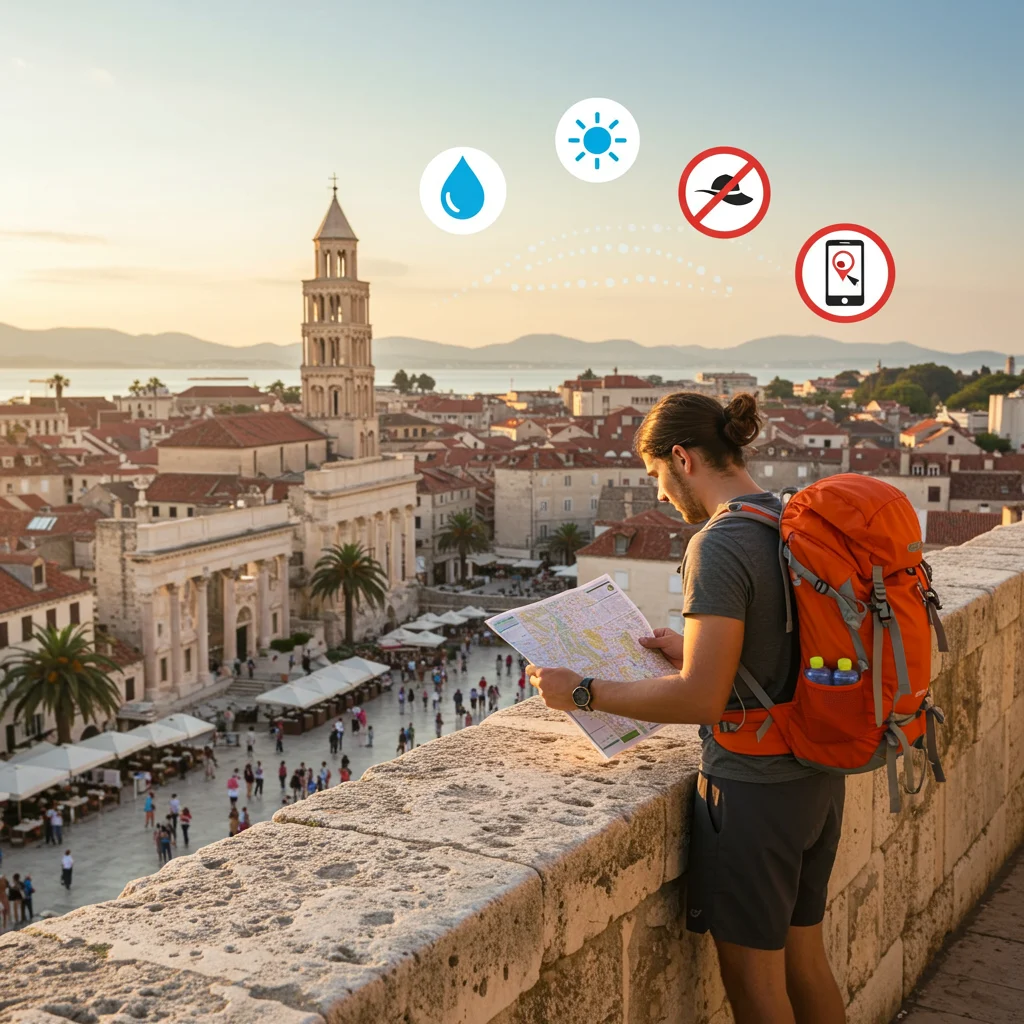
- Keep valuables secure and be mindful of pickpockets in crowded areas
- Stay hydrated, especially in summer
- Follow local guidance and posted signs in historic areas
Emergency services are reliable, and locals are generally friendly and helpful.
How to Avoid Tourist Traps in Split
To sidestep common tourist pitfalls, we recommend:
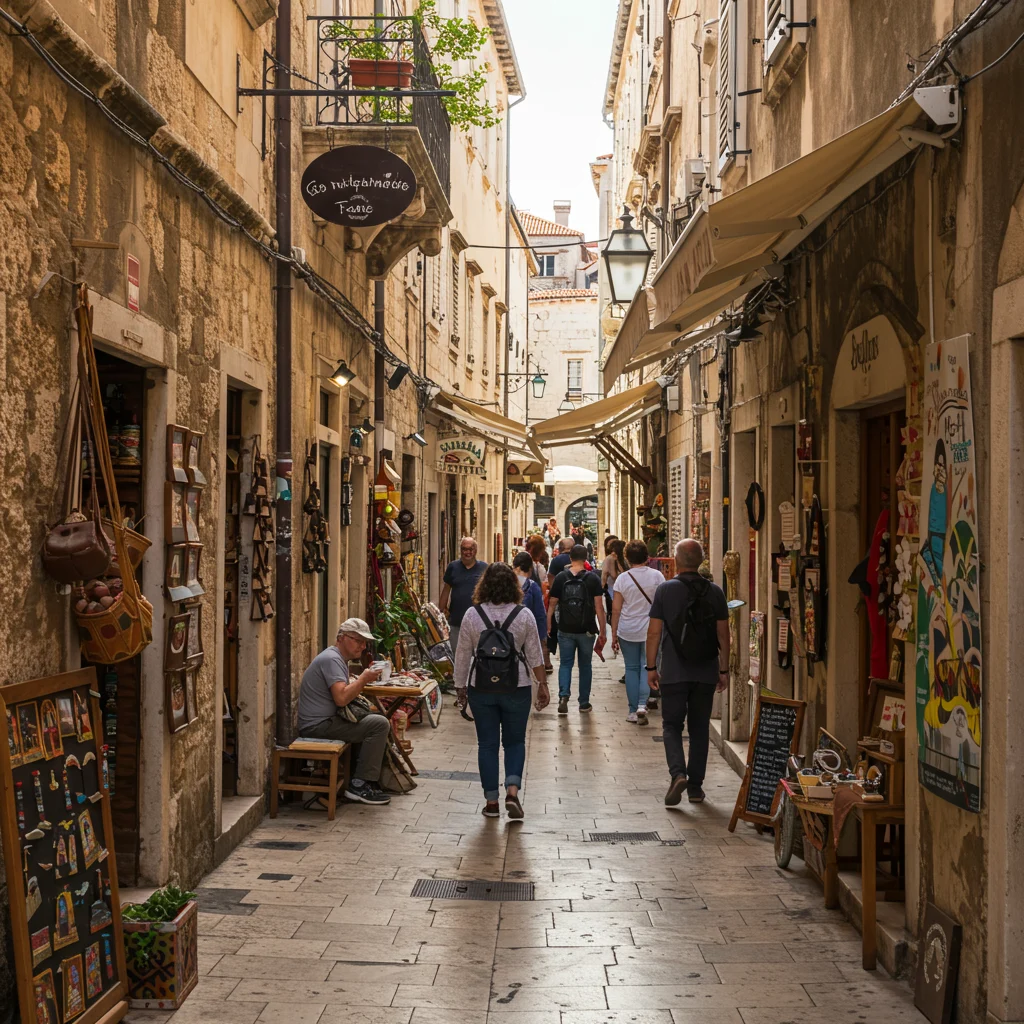
- Dining at restaurants frequented by locals
- Purchasing souvenirs from artisan shops rather than mass-market stalls
- Consulting your private guide for authentic recommendations
A little research and local insight go a long way toward a genuine experience.
Sustainable Tourism: Respecting Split’s Heritage
We encourage visitors to respect Split’s cultural and natural heritage by:
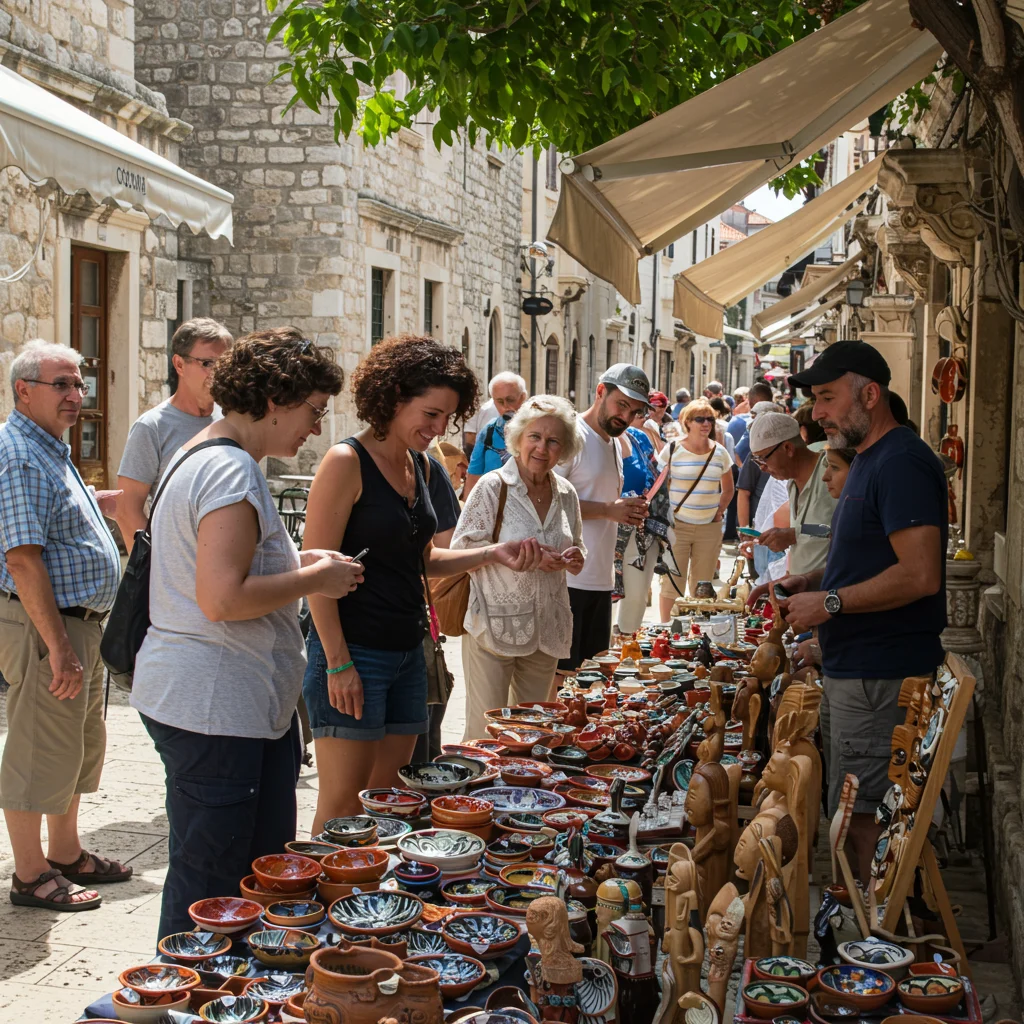
- Staying on marked paths within historic sites
- Supporting local businesses and artisans
- Reducing plastic waste and conserving water
Responsible tourism helps preserve Split’s beauty for generations to come.
Split for Solo Travelers: Is It Safe and Fun?
Solo travelers will find Split welcoming and easy to navigate. The city’s compact size, friendly locals, and abundance of group activities make it an ideal destination for those traveling alone.

Joining a private or small-group tour is a great way to meet new people and gain deeper insights into the city’s history and culture. If you’re interested in solo-friendly tours in other destinations, you may find inspiration in our guide to private tours in Ubud.
What to Pack for Your Split Adventure?
We suggest packing:
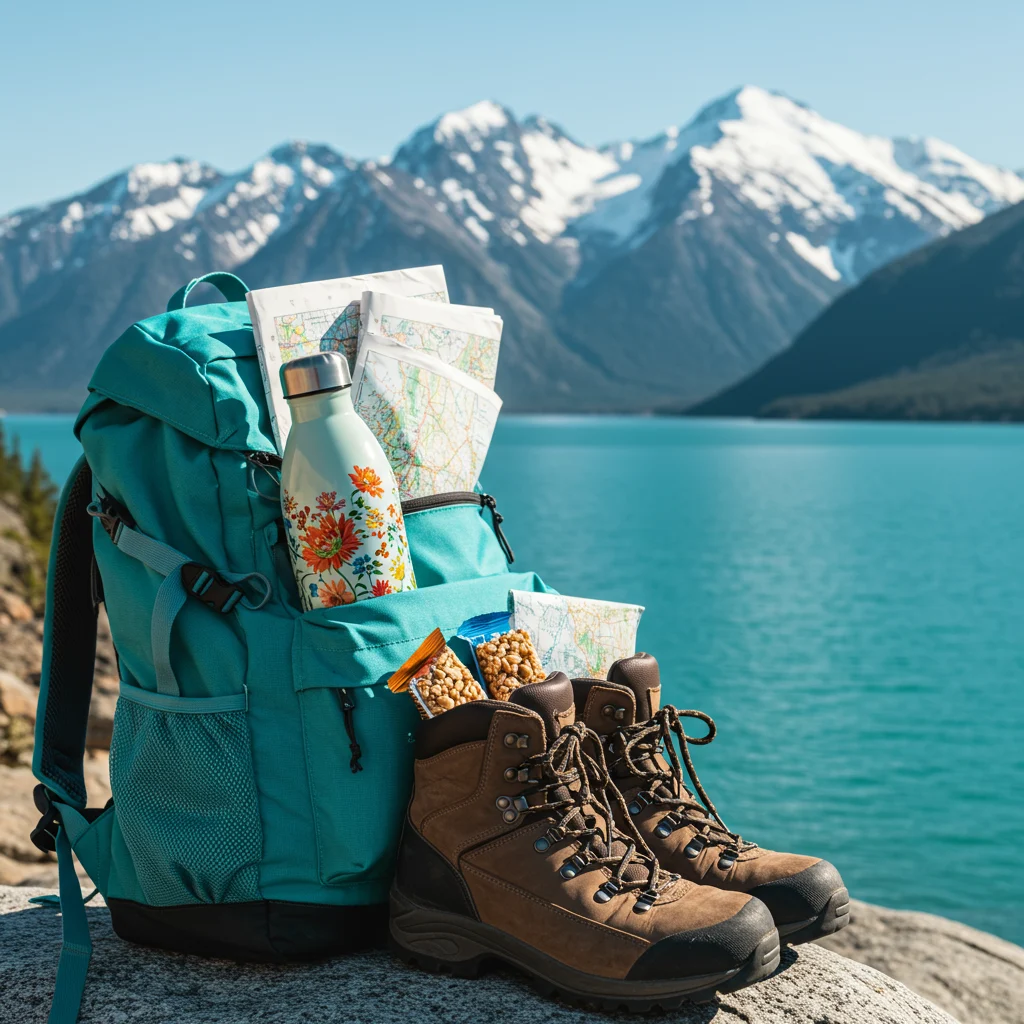
- Comfortable walking shoes
- Lightweight clothing and a sun hat
- Swimsuit for beach or island excursions
- Reusable water bottle and sunscreen
- Camera or smartphone for photos
- Travel plug adapter (Croatia uses Type C and F plugs)
Money Matters: Currency, Tipping, and Payments in Split
Croatia’s currency is the euro (EUR). Credit cards are widely accepted, but carrying some cash is useful for markets and small shops. Tipping is appreciated—rounding up the bill or leaving 5–10% is customary in restaurants and for tour guides.

Useful Croatian Phrases for Tourists
Learning a few basic phrases can enrich your interactions:

- Dobar dan – Good day
- Hvala – Thank you
- Molim – Please / You’re welcome
- Gdje je…? – Where is…?
- Koliko košta? – How much does it cost?
Locals appreciate the effort, and even a simple “hvala” can bring a smile.
Conclusion: Why Your Best Private Tour Starts in Split
A private tour of Split and Diocletian’s Palace offers an unparalleled journey through history, culture, and the everyday magic of the Adriatic coast. With expert guidance, personalized experiences, and the city’s unique atmosphere, every visitor leaves with unforgettable memories.
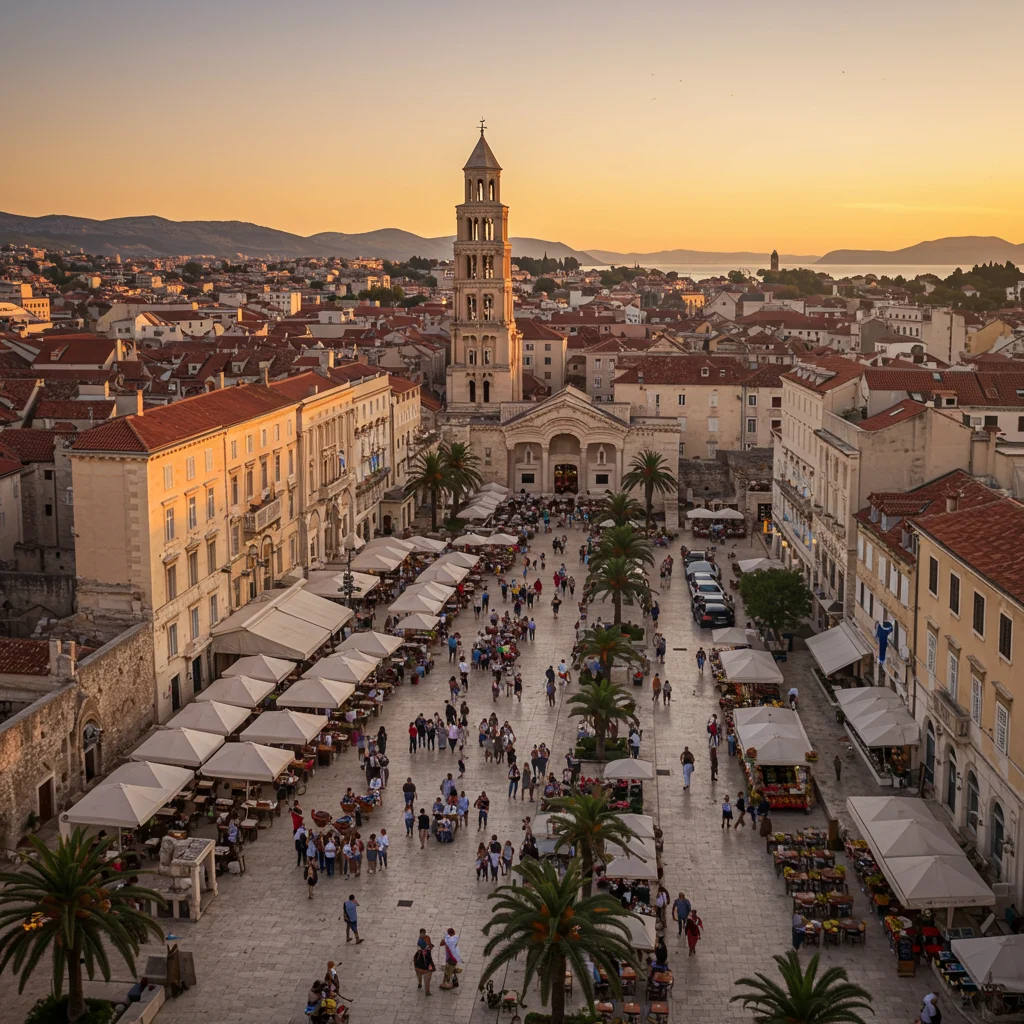
At Unisho, we’re passionate about sharing the world’s most fascinating destinations. For more inspiration and tips, visit Unisho and start planning your next adventure today.
How to Book on Viator
Ready to experience Split and Diocletian’s Palace on your own terms? Booking your private tour is simple with Viator, a trusted platform for global travel experiences. Their website allows you to find tours, read verified reviews, and customize your itinerary with ease.

To plan your trip or book activities, simply visit Viator’s booking page, select your preferred tour, and follow the secure reservation process. Your best private tour of Split awaits!
Disclaimer: This information is accurate to the best of our knowledge; however, there may be changes or mistakes. Please verify exact details on the Viator booking page.

